#also today I learned that not all cuckoo's species do that
Explore tagged Tumblr posts
Text
One of the saddest scenes in "March Comes in Like A Lion" was when Rei watched that documentary about the cuckoo's brood parasitism and his reaction was: "he's just like me, fr".
#march comes in like a lion#sangatsu no lion#rei kiriyama#no dude that's not true!#also today I learned that not all cuckoo's species do that
35 notes
·
View notes
Text
AURORA

Interview by Stuart Williams for Euphoria Magazine (July 9th, 2021).
Norwegian songstress AURORA returns with brand new single “Cure for Me,” a glistening, message-driven piece that looks to set summer 2021 alight. “The ‘Cure for Me’ single was actually born two years ago,” she tells EUPHORIA in an exclusive interview. “I was in Australia on tour and then instead of having a day off in between the gigs, I asked my drummer and co-producer Magnus if we could rent a studio for a day and have some fun. I had this theme I wanted to get out of my head [hums melody]. I just really wanted to make a song with this ugly theme and we made it — my team kind of discovered it a few years later and said, ‘Ah, this is lovely, we should make it a single.’”
Speaking about the synth-laden track, AURORA finds herself reflecting on a controversial practice evident around the world. “It was originally inspired by those countries in the world that still forbid being gay and also the countries where conversion therapy is still allowed,” she says. “I think even in Norway it’s allowed — that’s the main reason I wrote this song. I was like, ‘I want to make a fun, celebration song about I don’t need a cure for me, I don’t need it, I’m perfectly fine.’ It’s absurd how the world can ever think that people will ever need a cure for love. Then I also know that it can mean a few different things, which I’m excited about, but it’s mainly the fact that it’s very easy to make people believe that there is something wrong with them. People tend to go to that fact so quickly — it takes so little before we’re like, ‘Oh, something is really wrong with me. I didn’t react the same way that they did, I must be fucked up.’ Or, ‘I don’t look like them; OK something is wrong.’ You know, we think something is wrong with us all the time and the media is telling us we’re not good enough. Everything all the time is trying to make us think that we’re insane. That’s kind of sad isn’t it? So it is kind of an opposite thing.”
With “Cure for Me” evoking a deepened understanding of an important subject to the artist, AURORA finds herself looking inward. “I am very lucky because I’ve never been that affected,” she shares. “I’ve been told many times in my life that, ‘You’re a bit [makes cuckoo bird sound].’ I’m very little Norwegian in many areas; I’m very Norwegian in some. It’s a very strange culture here and if you are very open, emotional, impulsive, and if you have a bit of a different brain, [it] doesn’t take much before you get aware even as a child that, ‘Oh, I am a bit different’ and it messes with your head a bit. It messed a bit with my mind in the beginning when I first started noticing it. I’ve never really cared and I don’t care now — I find so much joy and liberation in simply existing in the way that fits me the most. That’s a joy I find hard to let go of. We’re so diverse and that’s the whole point. That’s the foundation in our species that we are all different and we still manage to twist it around and make people feel bad about it.”
With the pandemic pushing live music events back further and further, the singer is eager to explore the track in a live setting. Speaking about her feelings from the release of the new single, AURORA says, “I wish I was nervous because I love being nervous, it’s like being in love isn’t it? But I am not nervous, I rarely am — it seems like a waste to me to be nervous about something I can’t control. But when I’m done with it, I need to just release it and it’s out of my hands, out of mind and out of sight — it belongs to the world. So no, I’m not nervous at all, but I am very excited. It’s always interesting and a fun experiment to see how people react when you do something a little different. It varies a lot what people think about it, so that’s very interesting to watch.”
Describing the process of creating the track, she says, “I like experimenting with the people you have around you. I like using the people I love and I like working with close people, you know. I feel like you don’t need to look out and search for the big names out there when you have talented friends, and you can just make music with them instead. Magnus is very good — I love working with him because he doesn’t write lyrics and interfere too much. I can’t write with anyone because I don’t like it so much, so it’s nice for me to be able to write and do what I want. When we produce the music we are sometimes very on the same page and sometimes we disagree. It’s fun to either fight for your opinion or learn that you were wrong, and I love that. We just have fun.”
Six years ago saw singer-songwriter AURORA release “Runaway,” the opener to All My Demons Greeting Me as a Friend, an album that saw her career catapulted into the stratosphere. Today “Runaway” has 275 million streams on Spotify, 140 million views on YouTube, and is rising week over week in the Official Singles Chart Top 100. Not only this, the track has also been given new life on social media app TikTok and is being streamed 2 million times daily. The roots of “Runaway” emerged at 11 years old, AURORA says. “I often think about that — of course our mind I guess perceives the past like, ‘Oh my God, it went so quick’ and I can remember things from when I wrote the song when I was 11 and now I’m over 10 years older than that. It is weird but I guess I remember the times, I’ve been really depressed two times in my life and then time moves so slowly that it’s exhausting and suffocating, so I feel like it’s a very good sign when you feel like time has gone past.”
It’s hard to believe that in 2015 the track found its way to the ears of a then-12-year-old Billie Eilish. It arguably led to Eilish starting her music journey — a career that has made her a global phenomenon. The track, AURORA says, has found a brand new life out in the world. “It has lived its life and therefore the success ‘Runaway’ is achieving I don’t manage to take it personally because it’s not me anymore, you know?” she says. “It’s sort of like, it’s a baby and every song is a child when you make them and it’s best part: making the child. It’s the most fun in every way, I think, in all possible metaphors. But I think when you raise the song, it’s a teenager or an adult and you just have to let them go and let them live their best life out there.”
Reflecting further on a younger version of herself, AURORA explores a very different mindset from that age and then now. “I remember when I first started writing I was really aware and had this epiphany that, ‘Oh my God, music can help with so much and music can speak about the unspoken. It can explain the unexplainable and put words into these impossible emotions,’” she says. “It has to do with being human. I took music very seriously, music was always very serious for me — very emotional and very explosive. Like a medicine, but I took it really seriously and I have so many sad songs. They all have a little light in them, I don’t manage to bring out sadness unless there is light to complement it I guess. I have so many sad songs and with time I kind of learnt that, ‘Oh my God, there is a whole world out there and people also need to dance and have fun in this life.’ I kind of learnt as I grew older that I can write songs that are fun and I can address things in the world that I love and hate, and I can speak up. Music can be much now: it can be a political force, it can be an emotional force and a release. Now I’m just enjoying all the signs of it. But it’s changed a lot, I’m more open now to what music can be, which is delightful.”
The human experience is a theme AURORA touches on throughout her musical output, however the physical act of producing art has been a huge outlet for the artist during this time. “I am very comfortable with this staying-inside-being-anti-social situation,” she shares. “It’s very good for me and I’m actually enjoying it quite a lot. Even though I can feel it in the people that [there is] this itch under the skin. I can feel the itch for things to change and go back to normal, but I’m also really enjoying things as they are now. I’ve been painting quite a lot. I always find it very intimidating to paint big pictures, obviously you know, it’s very easy to make a small piece of art, for me at least. I’ve been trying to make a really big one so it’s really big, and it’s very scary; but it’s very soothing. Painting to me is like the same as music but the opposite, because it’s an outlet for the art and it’s quiet and serene. While music is very explosive for me so it’s a very nice thing to have in my life. I feel very balanced.”
22 notes
·
View notes
Photo
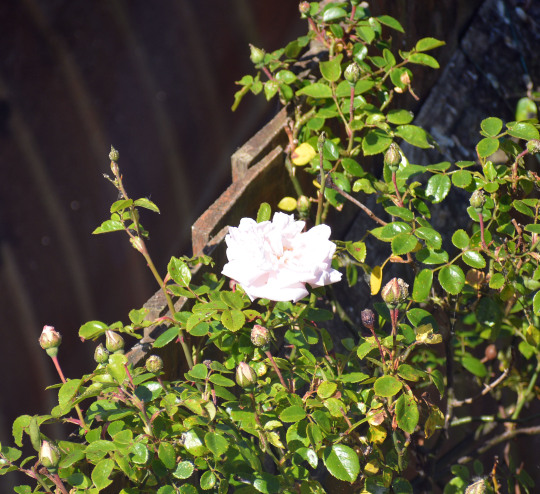
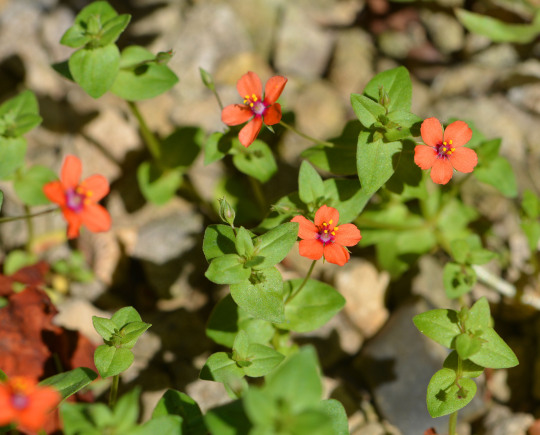
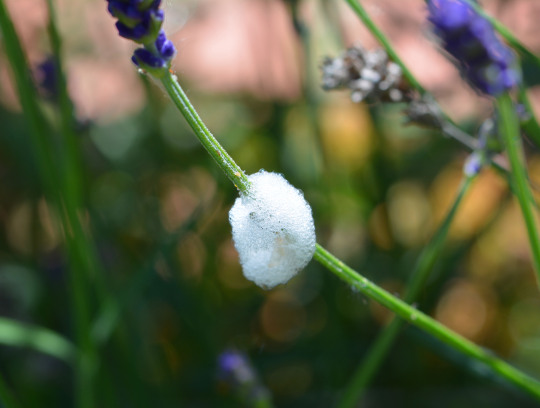

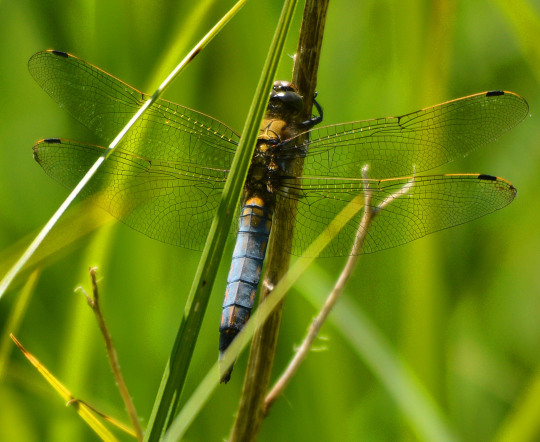

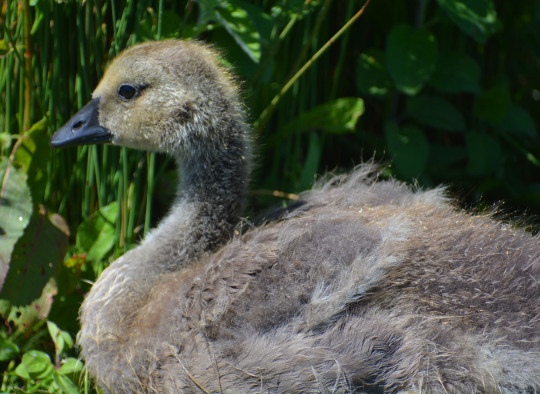
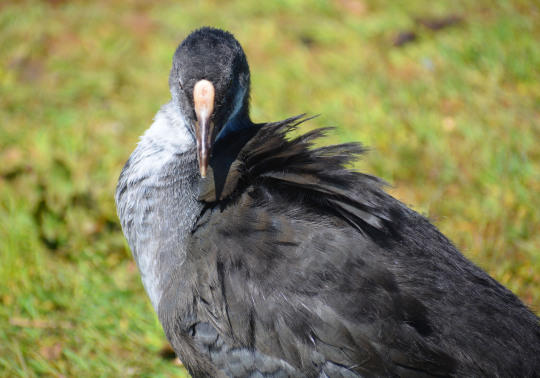
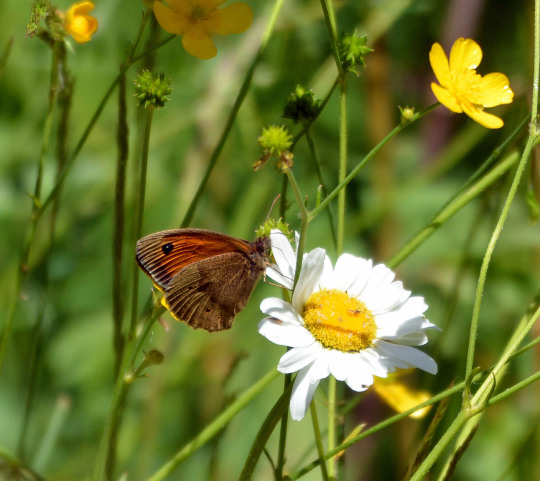
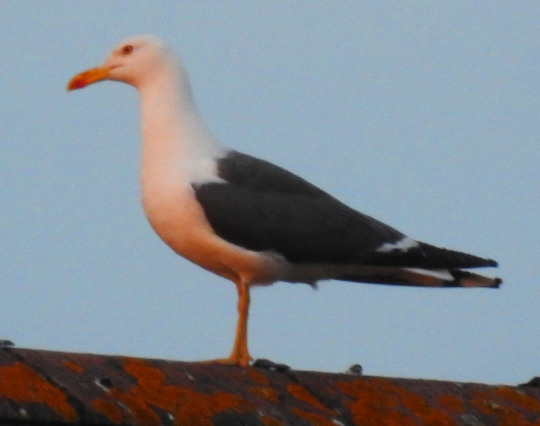
14/06/2021: Part 2 of 2-The wildlife photos and experiences at Lakeside and home
On a scorching day I enjoyed a lot around the home before I went for my Lakeside walk, including the lovely rose on a bush in the back garden seen from my bedroom window which looked nice I took the first picture in this photoset of this. I was then thrilled in another productive photo session in the front garden to see some poor man’s weather-glass aka scarlet pimpernal (the latter probably the most common name for it, but I found it using the PlantNet app when I was first getting into flowers last year as the former when I first got into flowers in the late summer a time I look back on fondly seeing this on the green out the front and then at Cley and Salthouse Marshes in Norfolk). This was a flower I really loved learning last year one I find so addictive, sweet, small and colourful to see so I was thrilled to see this looking so nice. I took the second picture in this photoset of these. Alongside speedwell, daisy and some willowherb a nice tiny contingent of flowers making it to our stony front garden lately which is great these did look scrumptious and bright red in the sun. The cuckoo spit on the lavender flowers was still present after I noticed it on Friday and I couldn’t resist a macro photo of it gleaming in the sun the third in this photoset.
After taking in stunning views and noticing a lovely bright purple mallow on the grass by Lakeside which I tweeted a picture of tonight on Dans_Pictures another flower I loved learning last summer I reached Lakeside and was thrilled to spot a Swift gliding effortlessly through the bright blue sky on arrival. Low enough with my big lens on at this point to try for a photo not the easiest one to photograph they are of course so fast, but I just about managed a couple including the fourth picture in this photoset of this.
I reached beach lake the westernmost one and set about looking for one of my targets the Black-tailed Skimmer a lovely dragonfly that my Mum had seen here yesterday and I had for the first time of the year in 2020 on the 1st June that year. No sooner had I started taking in the wonderful views over this lake especially which I mentioned in my previous post about today than one of these excellently marked and bright coloured dragonflies danced over the grass in front of me leading me to a little reedbed area at the base of the lake where I confirmed it was this favourite dragonfly species of mine. I loved looking at it and taking it in for a little while being so in aw of it. I took the fifth picture in this photoset of it. This sparked a memorable and packed few minutes when as I caught a sight of some Mallards with ducklings in the northern edge of beach lake I saw in my binoculars with them was a beautiful burgundy Little Grebe. This was fantastic to see, I obviously see Great Crested Grebes so well here so often but this was only the second time I’d ever seen its smaller cousin here after last November. It was completely unexpected today and another amazing bird moment lately I loved watching it for a little while. Walking north of the lake a bit I couldn’t quite get a clear shot closer through the reeds and trees but I did see some nice heath spotted-orchid along the fringes of the path and I loved seeing these and yellow iris mixing together well and dominated the edges of the lakes which made for stunning views which I captured and tweeted photos of both star flowers recently. I did manage the sixth picture in this photoset of the Little Grebe with my big lens on for this and the dragonfly. Noticeable behind the grebe was a damselfly or it may have been a dragonfly
I then took some landscape photos and put my normal lens on. The lens I discovered the Saturday before last is a great option for dragonfly pictures with one of a Broad-bodied Chaser I was quite pleased with. I couldn’t have written it better then when the only seen fairly fair away in reeds and zipping past before during my lunch time walk today Black-tailed Skimmer or a Black-tailed Skimmer settled right next to me well within range for my 70-300mm lens I lapped up chances for photos of this tweeting the photo I took forward from this set. It was a utopian late spring/early summer afternoon as I watched the skimmer one of my favourite dragonflies three of them I believe which I didn’t really realise was at Lakeside having seen them at other locations before working from home patrol the bright blue lake.
I liked seeing damselflies around this lake and Swifts fly over and skim the lake here too. I also liked seeing the baby birds again; Canada Goose and goslings like the one in the seventh picture in this photoset, Coot chick like the one in the eighth picture in this photoset and Greylag goslings along with the ducklings. It was nice to enjoy all of this again. In the searing hear I went towards Concorde Lake through a very well grown up path here and almost brushed up against a lovely Banded Demoiselle here and I also spotted a bright Red Admiral flying around the vegetation which I was very pleased to see so well one of my favourite butterflies.
Going home past the visitor centre and looking over the southern fenced off nature reserve area where I hoped to see Meadow Browns and other insects on this route the Meadow Brown my Mum also saw at Lakeside yesterday on this stretch. Walking along here I was captivated by a great light coloured dragonfly prominently flying around. I watched it landed for ages trying to get a picture from the other side of the fence with my big lens I didn’t succeed. I worked out it was a female Common Darter thought another star of Lakeside last year which I found brilliant to see. It was my earliest ever sighting of a Common Darter in a year how many times did I say that about butterflies, dragonflies and damselflies including here a lot last year in the early progressing spring this year slower so it was nice to, to really show how in hot weather in June anything can happen. My previous earliest was 18th June at Bolderwood in the New Forest in 2017 for me.
What made the special Common Darter fly off was a butterfly flying into it and that was my target the Meadow Brown! I enjoyed a fantastic time watching this bright and warm looking butterfly on an oxeye daisy which I took the ninth picture in this photoset of. I was so happy I’d seen it, one of my next targets and my 25th butterfly species this year a figure I am thrilled with. But the Meadow Brown is often one of my most important butterfly sightings in a year as so often as it was this year (its only usually the Large Skipper that is the other one) its the first of the summer butterflies I see in a year. With the weather like this and now two key sights I see as summer rather than spring and signpost when the season transitions for me, this and foxglvoes on road verges on Saturday it feels very summery! I saw another Meadow Brown on the way out and enjoyed the meadows carpeted in bright oxeye daisies which I just loved seeing and taking in such beautiful scenes. I enjoyed at the flower patch in the estate on the way back the glorious poppies again one looking enormous and I took a photo I was happy with of that. There was something I found out in our personal life today which was something very sad about an important person in my life, but I felt at lunch time I did what I do best and let nature uplift me which was much needed being able to see these targets locally and it felt great to sneak them in before our holiday next week.
I did take a second Lakeside walk this evening with other things on including a day off an an organised walk we are going on tomorrow happening and preparation for holiday as the week goes on this the last evening walk with a camera and binoculars I’ll do before going on holiday. I loved taking in some beautiful scenes in the meadows of Lakeside to the east the area that would be my commute when working in the office, especially with the grass looking very long and some nice sky scenes formed at this time too. A lovely Kestrel flew over which I got a great view of near the kissing gate entrance where the Swift had darted over at lunch time. This evening it was great to enjoy Woodpigeon and Collared Dove on the roof visible from my room in the lowering sunlight, moth in the house again and a Lesser Black-backed Gull out the front which I took the tenth and final picture in this photoset of. I hope you have all had a nice day.
Wildlife Sightings Summary: My first Meadow Brown, Black-tailed Skimmer and Common Darter of the year, one of my favourite butterflies the Red Admiral, Common Blue Damselfly, Banded Demoiselle, Lesser Black-backed Gull at Lakeside and home, Black-headed Gull, Mallard, Coot, Greylag Goose, Canada Goose, Little Grebe, Swift, Kestrel, Carrion Crow, Jackdaw including some on the green out the front where the Starlings and gulls have been spending a lot of times in the evenings lately adding to this well, Woodpigeon, Collared Dove, Starling, some lovely Long-tailed Tits at Lakeisde a great view, House Sparrow and Goldfinch.
#black-tailed skimmer#banded demoiselle#woodpigeon#collared dove#swift#kestrel#uk#england#world#beauitful#happy#greylag goose#canada goose#meadow brown#butterflies#dragonflies#dragonfly#damselfly#little grebe#photography#wildlife#birdwatching#eastleigh#lakeside#lakeside country park#europe#nature#starling#goldfinch#long-tailed tit
6 notes
·
View notes
Text
Interesting Bee Species
Happy Thursday! The most common types of bees include the honey, bumble and carpenter. But did you know that there are over 20,000 species of bees, flying around the Earth, all performing a bunch of really interesting jobs?
Today, we’re going to learn about a few that make up the world. Protect all pollinators!
Cuckoo Bees
These bees are parasitic, and they don’t connect pollen because of the lack of pollen sacs on their legs. So, how do they take care of their young? Unfortunately, they actually invade the hives of other bees in many different ways to raise their young- from laying their eggs in brood chambers before the host is capable of doing the same, or killing the queen of the hive and forcing the workers to raise their young. Sometimes, in bumblebees’ nests, the bumblebee will raise the cuckoo bees unknowingly- just like their own. These bees’ larvae are just as harsh, too- they have massive jaws that are used to attack the hosts’ larvae. They are TRULY cuckoo, beware of these bees!
Digger Bees
The name of these bees comes from the actions of some species, for when the male senses the presence of a female bee, they dig into the ground to wait for her. These little bees usually nest alone, which is hard to think of when you hear that honeybees can have a hive of more than 50,000! They have a very mild sting, in which they are very careful with using, and also have longer antennae. The digger bees’ nests are built in either the wood or the ground.
Mason Bee
These bees are some of the easiest to keep- and in my post here you can find out how to do it! I am currently, I can’t wait to see them in the spring! A pretty cool fact about these bees is that sometimes, they will nest in empty snail shells.
Leafcutter Bees
The leafcutter cuts a piece of a leaf off using their sharp jaws, and then carry it to their nest between their legs. It’s really interesting to see- their favourite flower is the rose. They use these pieces to build their nests, in which they store pollen, honey and eggs inside. The female bee does pretty much all of the work, too.
Killer Bees
Finally, some of the bees that I find to be quite interesting. These bees were created by scientists- in the 1950s, Brazilian scientists bred African honeybees with European honeybees to try increasing honey production. They quickly adapted to their new habitat and their population skyrocketed. They are very, very useful for crop pollination, and almost resemble the honeybee exactly- however, they are much more aggressive. If their hive is ever to be disturbed, they can chase their new enemy for a very long time – up to a quarter of a mile - and it takes a while for them to cool down. They stick together, and sting together.
So there you have it- a small portion of some pretty cool bees. They’re all so unique, in their very own way. So let’s save the ones that need our help.
88 notes
·
View notes
Text
ZOKA: THE TRANSFORMATIVE POWER OF NATURE (January 11, 2021)
What is zoka?
Zoka is a Japanese word used to describe the complexity of nature, specifically, the transformative power of nature. Clues to the meaning of zoka can be found in the work of the great 17th century Japanese poet Basho, master of the haiku, and inventor of the form known as haibun. Prior to Basho, a culture of the seasons already existed in Japan, in which the symbolism of the cherry blossom, the cuckoo, the moon, and snow, carried weight more complex than their individual physical embodiments.
Basho wrote: “…Nothing one sees is not a flower, nothing one imagines is not the moon. If what is seen is not a flower, one is like a barbarian; if what is imagined is not a flower, one is like a beast. Depart from the barbarian, break away from the beast, follow zoka, return to zoka.”
Basho seems to be arguing for a return to nature, and yet the idea of zoka is more complicated than that. Basho is arguing not for human immersion in nature only to appreciate the aesthetics of nature but also as a way to rediscover our place in nature. At the same time, Basho acknowledges the difficulty in capturing the complexity of nature. He wrote: “The heavenly skill of zoka: who could fully capture it with [painting] brush or [poetic] words?”
What techniques can we use to achieve the skill of zoka and thereby transform our writing? Perhaps we can understand Basho’s idea of zoka more completely by looking at a couple of his poems.
Clear voiced cuckoo,
Even you will need
The silver wings of a crane
To span the islands of Matsushima
I am awe struck
To hear a cricket singing
Underneath the dark cavity
Of an old helmet
We notice in Basho’s haiku a combination of the high and low elements of nature. The last haiku in particular stands out through the presence of the human artifact of the soldier’s helmet. The soldier is absent from the scene but the helmet remains, placing the idea of war in our heads.
A second way of following zoka and returning to zoka is by using all our senses. Take the way in which we encounter air. We feel air through the wind on our skin and have even built objects to translate the movement of air into sound. The human species prefers, or uses almost exclusively, our sense of sight. But remember to use the other primary senses in your writing: touch; smell; taste; and sound.
A third way of following zoka and returning to zoka is by understanding human presence as part of nature. Especially in an urban or suburban setting one can’t help but notice human presence. Even when empty of people the landscape includes our walls, and such signs as the freshly mown lawn. Contemporary writing can’t help but operate from a new normal where the landscape is dominated by human traces. In today’s era, which some call the Anthropocene Era, awareness of human transformation of nature is as essential as awareness of the transformative power of nature.
We’ll end with some last words of advice from Basho: “Go to the pine if you want to learn about the pine, or to the bamboo if you want to learn about the bamboo. And in doing so, you must leave your subjective preoccupation with yourself. Otherwise you impose yourself on the object and do not learn. Your poetry issues of its own accord when you and the object have become one…”
Sources:
Barnhill, David Landis. “Zoka: The Creative in Basho’s View of Nature and Art.” Matsuo Basho’s Poetic Spaces. Kerkham, E., ed. New York: Palgrave Macmillan, 2006.
Bashō, Matsuo. The Narrow Road to the Deep North and Other Travel Sketches. Yuasa, Nobuyuki, transl. New York: Penguin, 1966.
0 notes
Text
Wednesday 23rd December 2020
Our Garden etc. Birds. Part 2 The Comings and Goings
♦ bold type indicates a link to an outside site not affiliated to this blog
Let’s start with our traditional ‘Christmas’ bird. The Robin is a member of the Thrush family and is related to both Blackbird and Nightingale who are all also well known for their singing.

Most Robins live a sedentary lifestyle, staunchly defending their own patch of territory from rivals. In fact, they have apparently been known to fight their own reflection or spar with an adversary to the death.
Many Robins won’t move more than 5km (3.11m) whatever the season. Some leave the UK for warmer climates before Winter arrives. Most of these birds are female, crossing the Channel to as far away as Spain or Portugal. They return to the UK with the warmer weather. No passports or Visas required for their wings - bit of a topical joke there: wildlife only obeys borders when it wants to.
We have numerous resident Robins here because we have such a large extent of suitable habitat surrounding the house and they know a good source of food and water for certain. It’s all very harmonic at the moment, but of course that’s subject to change when there’s more at stake.
Robin Facts:
Only for a short period in late summer while they are moulting and inconspicuous do robins stop singing. Both sexes sing.
As with the Nightingale, the song is usually delivered from a concealed perch within a bush or a tree, exposed perches are infrequent. Autumn and Spring songs are distinctly different. The Autumn song starts after the moult, from late Summer onwards. It is more subdued and melancholy in its tone, while the spring song is powerful, confident and upbeat.
The Spring song can start as early as mid-December, reaching full force in Spring. Its purpose is two-fold: to defend a territory and to attract a mate. Therefore, Spring song is far more powerful in males.
Robins are adapted to life in poor light and are often active in half-light when few other birds are about. They tend to be among the earliest birds to start the dawn chorus and one of the last to stop in the evening.
Street lights and floodlights can trigger singing in the middle of the night, and if roosting Robins are disturbed, they can burst into song even in complete darkness.
RSPB
In mild winters robins can start breeding as early as January although their usual breeding season starts in March.
Every continent has its own species of robins, but only the Japanese and Ryukyu Robins are closely related to the European Robin.
Birdspot

Remember last week’s controversy about the colour of their eggs? If you missed it, THIS is the Blog entry you want. Don’t let the headline title put you off, it’s all in there, scroll down.
One of the most interesting facts about migrating Robins is how faithful they are to their territories. Many maintain both their summer and winter patches despite them being hundreds of kilometres apart.
Of course the same is true in reverse. Resident birds are often joined by migrants from Scandinavia, Europe and Russia who avoid the most severe weather in their own countries. Along with other members of the Thrush family like Redwings, Fieldfares and Blackbirds, they arrive on British shores - usually along the East coast - once their own food supply has been covered by snow and ice.
When other garden birds migrate and return
At least 4,000 species of bird are regular migrants. That's about 40 per cent of the world's total. But some parts of the world have a higher proportion of migrants than others.
RSPB
Between September and March, 10-20 million Chaffinches fly here from Scandinavia and Western Europe. They can be differentiated from our resident Chaffinches by their foraging behaviour: searching for food in large flocks on open farmland. UK Chaffinches favour gardens, woodlands and hedgerows.
The UK also sees an influx of Starlings during Winter. Fleeing the severe cold in Eastern Europe, they seek solace in our abundant food sources and comparatively balmy temperatures. Numbers will trickle in throughout September, but the influx really kicks off during October. According to experts, one UK Starling roost numbered close to one million over-wintering birds!
In our own garden the most unusual bird we’ve seen visiting is a Turtle Dove, just the one and only on two occasions in subsequent years. Red listed as endangered and even on the verge of extinction it was a real thrill to see it and report the sighting to Operation Turtle Dove.
Turtle Doves have very distinctive plumage and beautiful voice quite different from other Pigeons.
The 12 Days of Christmas is a song that promises a great deal, but there’s a line that carollers may have to omit in future. Before a whole house of leaping lords and dancing ladies, the second day is supposed to bring two turtle doves. But dramatic declines in populations across Europe may mean that day two disappoints true loves in Christmases to come.
Only slightly larger than a blackbird, the European turtle dove is the UK’s smallest species of pigeon, as well as its only migrant species. You would be hard pushed to find turtle doves in the UK during December, as they spend the winter in sub-Saharan Africa, returning to Europe to breed in late April. With their return comes their gentle purring song, a long-standing sign of spring.
The Conversation
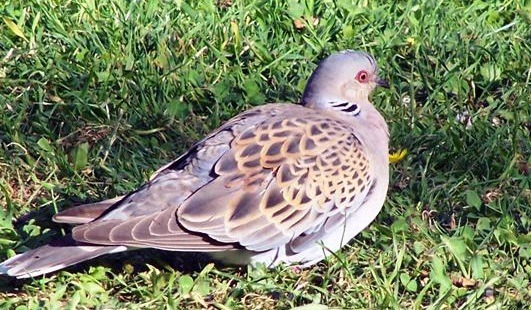
Turtle Dove in our East Sussex garden - yes they are a real thing (for now)
Formerly a widespread breeding species in Britain, the Turtle Dove population in Britain has declined by over 90% since 1994.* The declines are likely linked to changes in agriculture on their breeding grounds in Europe, as well as hunting pressure in the Mediterranean region and possibly environmental changes in their wintering grounds.
BTO
UK decline 94% since 1995 - source Operation Turtle Dove.
Dangers include the fact that it likes to mainly feed from the seeds of weeds and the tidier our land becomes, the more their diet reduces...no one can say that we don’t do our bit Chez Nature Watch! and very sadly, recreational hunting in some parts of Continental Europe.
European Turtle Dove will no longer legally be killed in France this autumn, after the Conseil d'Etat banned hunting of the Vulnerable-listed species. On Friday [11 September 2020], the highest administrative court in France outlawed the practice for the 2020-21 season.14 Sept 2020 Birdguides.com
I really hope the ban continues and spreads far and wide.
You can read more about bird migration here from the RSPB. It offers loads of information and right at the bottom of that page you can also read more about Turtle Doves.
Of course, nothing for me tops the year we had Swallows take over the open fronted nest box in our porch. Getting photos was tricky as we didn’t want to disturb them - to the extent of taking a circular route to go up and down stairs and using our back door when we could.
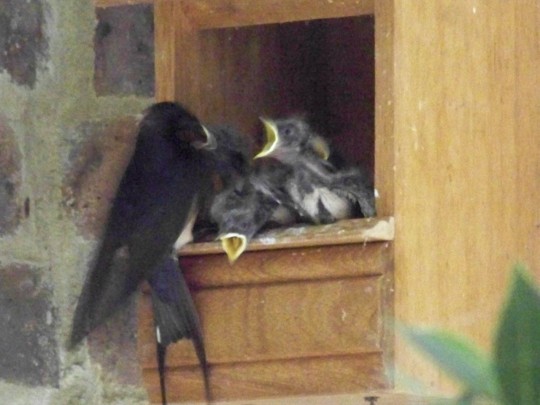
I often wonder what happened to our brood. Just look at the BTO Migration Map. It’s an incredibly long and arduous journey, fraught with dangers. Apparently this year numbers here were down due to catastrophic storms off Greece in April or May. There did seem to be a healthy population in our neck of the woods though and I always look forward to seeing the migrants back again.
There was an interesting blog about this Summer’s situation Here from a bird food supplier in Hampshire.

Picture credit the BTO as above link
There were actually five in our brood and they all fledged successfully. The photos are fuzzy but given the low light, stealth and using only a little camera, at least I got a record of their Summer with us. I’ve always been so disappointed they didn’t return.
Most songbirds use a nest for just a single clutch or season, then build a new one – if they survive to breed again. But one study showed that most swallows returned to the same colony, with 44 per cent of pairs reoccupying the same nest. ... A good nest may be reused for 10–15 years by a series of different pairs.
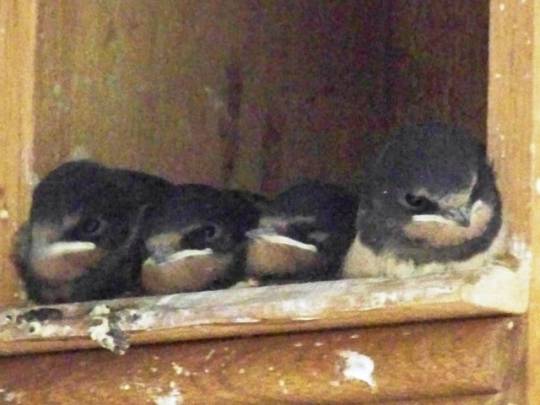
Finally today I can’t finish without a big shout out for the BTO Cuckoo Tracking Project where you can get lots of information and also follow the whereabouts and progress of Cuckoos making their journeys backwards and forwards. Currently there’s information on Carlton II, PJ and Valentine.
Cuckoo Article from Countryfile. It’s brilliant.
I hope the last couple of Blogs have been informative as well as interesting. There’s certainly enough reading material to cover quiet moments over the Christmas break if you want something entirely different. I never pretend to be an expert in anything but do go to reputable sources for the links and enjoy increasing my knowledge as I research what to include.
Notes from the Kitchen:
Last night we had a really delicious fish pie. We used Haddock and Salmon, leeks, peas and carrots, parsley and a savoury white sauce. I had thought about grating cheese on top of the potato and adding some thin slices of tomato, but didn’t get around to it...lazy!
Decoration from the Standen Courtyard Christmas Trees
A Pointsettia flower.
Personal details removed from label, the lady who crafted this is hoping to become a volunteer at the property in the New Year.
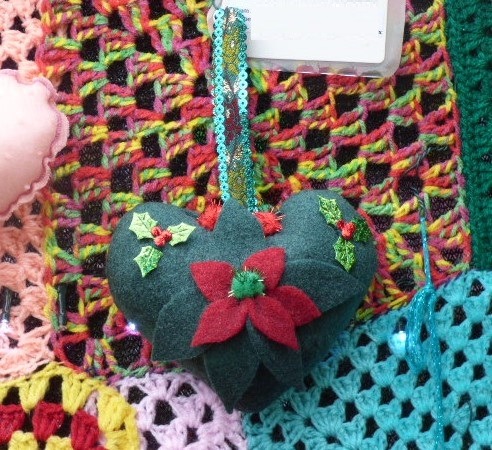
December 23rd Advent Door. Not expensive, just Little Deer

The Nature Watch Nativity
MANY CHRISTMAS CAROLS make mention of the three kings, who follow a star and come to pay homage to the baby Jesus in Bethlehem. In the Bible, they are not called kings, and their number is not specified—instead they are “wise men from the East.” At many courts in the east, including ancient Babylon and Persia, learned astrologers often served as priestly advisers, practiced in the art of magic. In the centuries since, the three magi have been interpreted as kings.
Taken from This Page where you can see an absolutely incredibly beautiful and ancient mosaic.

Carol of Choice from King’s College Choir, Cambridge
‘We Three Kings’
youtube
0 notes
Text
Rowlet, Dartrix and Decidueye
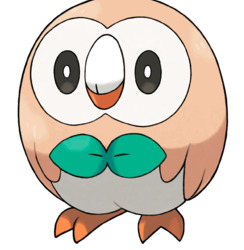
Bloody hell, if I don’t hurry this up they’re going to announce another damn generation before I’m done with this one; we’re already expecting whatever this bull$#!t is supposed to be and I’ve got eighty whole Pokémon to evaluate in the next couple of months, as well as talking about Team Skull and the Aether Foundation, and Hau, and maybe Lillie too, and whoever I decide counts as the Champion, not to mention answering the neverending tide of ridiculous banal questions that keep pouring out of my goddamn inbox (obviously, gentle reader, I’m not talking about any questions you might have submitted, which are of course consistently insightful and thought provoking; it’s all those other bastards that are the problem).
I’M FINE
Let’s talk about Rowlet.
If you pay any attention whatsoever to this blog for any length of time, one of the first things you discover is that I like Grass-types. The Grass-type has been my go-to starter for my first playthrough (and most subsequent playthroughs) of every generation since the first. Rowlet’s fate was bound to mine by destiny long before I ever laid eyes on him. And I’m basically okay with this. Rowlet isn’t really in contention to unseat Bulbasaur and Turtwig as my favourite starter Pokémon, but he’s fine. He’s easy and fun to use in a playthrough, we’ve never had a birdlike Grass-type before, it doesn’t hurt that he’s just objectively adorable, and in abandoning his Flying-type Decidueye becomes the very first Ghost-type starter Pokémon ever, which is neat. Rowlet and Dartrix are clearly barn owls, with the barn owl’s distinctive pale heart-shaped face, whereas Decidueye is maybe more of a hawk owl, although I wouldn’t read too much into that. Comparisons to Hoothoot and Noctowl, who seem to be horned owls, are in order, as one of my usual criteria for evaluating new Pokémon is “is this actually new?” and I think the answer there is… probably??? Part of the problem there is that Hoothoot actually has a much more clearly-defined and interesting “personality” than Noctowl, with his heavily stylised cuckoo-clock aesthetic and metronome-like rocking from side to side (actually though, as long as we’re here, why doesn’t Hoothoot get Metronome? I mean, I get that Metronome was still super-exclusive when Hoothoot was introduced, but they gave it to Snubbull and Chansey as an egg move). Noctowl is kinda just a big owl that does owl things. Rowlet, Dartrix and Decidueye are a bit deeper than that, which I generally tend to think is good. Decidueye’s arrows and archery are an odd touch, but as with Talonflame, you can link birds and arrows conceptually via feathered fletching, so that makes sense. What might not immediately makes sense to some of us is the switch from Flying to Ghost when Dartrix evolves, and this gives me an excuse to begin one of my patented Bull$#!t Lore Digressions™, so let’s learn some more about owls.
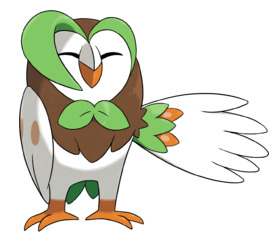
Owls are associated with the spirit world in several different and unrelated cultures, and there are some pretty good reasons for this. Owls are night hunters, but more than that, they’re silent hunters – owls’ feathers are softer and smoother-edged than those of other birds, so the flapping of their wings is much more difficult to hear, giving them a ghostly, ethereal quality. Also, like many nocturnal animals, their eyes reflect light and seem to glow in the dark in a disconcertingly eerie manner. Not for nothing are owls omens of death in sub-Saharan Africa, of sickness and bad luck in the native cultures of the American southwest, or of catastrophe in ancient Rome. In ancient Greece, of course – mainly in Athens – owls had a more ambivalent role as the sacred birds of Athena and symbols of wisdom (an association that persists today and gives us Noctowl’s famous intellect and minor psychic abilities). Even there, though, the sinister scops owl was seen as a creature of the underworld, and the owl’s reputation for knowledge subsequently made it the familiar of witches and warlocks in mediaeval Europe. In New Zealand, where I come from, the small brown hawk owl known as the morepork or ruru is believed to be an oracle of the future in Maori culture, its different cries portending either good fortune or disaster. Finally, and perhaps most relevant for us today, on several of the islands of Hawai’i a species of short-eared owl called a pueo is one of the more common shapes known to be taken by ’aumākua, the spirits of a family’s honoured ancestors, who return to serve as guardians and as a link to the spirit world (sharks, lizards and turtles are also common; families must show respect and deference to all animals of a similar form to their ’aumākua). An owl Pokémon thus becomes an intermediary between this world and the next, a sort of warrior-shaman that protects its trainer from spiritual threats using powers of its own that are more than a little dark and sinister (we see a similar theme with Hoothoot in the anime, where he has the unique power to force hidden Ghost-types to reveal themselves with Foresight).

This “mystic guardian” aesthetic is conspicuously undercut by what Rowlet and Dartrix seem to be doing, because they have more of a “dapper gentleman” style in play – consider the Pokédex line that describes Dartrix as “a bit of a dandy” obsessed with keeping his wings groomed, or their leafy bow-ties (in Decidueye, that evolves into something more like a brooch or the clasp of a cloak, which has a more mediaeval-fantasy feel to it). It feels like a very odd fit for the direction that Decidueye moves in. If you had just given me Rowlet and Dartrix, and told me to come up with ideas for a final evolution, I might, after substantial umm-and-ahh-ing, have pitched a kind of James-Bond-esque super-spy-in-a-tuxedo concept. That seems like a more natural continuation, but easily could have turned out looking rather stupid without some very clever way of unifying the design elements (and if there’s anything this blog should teach us, it’s that I’m not quite that clever). The self-important “dandy” aesthetic, after a bit of thought, is oddly reminiscent to me of the vain, professorial Owl from Winnie-the-Pooh, genuinely wise (…relatively speaking) but perhaps just as much concerned with the appearance of wisdom as with wisdom itself, and eager to look the part of the sober, intellectual scholar of the arcane. Decidueye’s own description from the Pokédex tells us that this wise Pokémon is nonetheless easily startled and flustered (try slapping him awake in PokéRefresh and you’ll see what they’re getting at). It’s still incongruous with Decidueye as mystic archer and night hunter, but it is at least giving me a common aesthetic thread to follow through all three evolutionary stages, something that’s quite important for a starter Pokémon to maintain. Which is enough for the purposes of this review, I think.

Stats-wise, Decidueye seems to be built as a mixed attacker, with strong offensive skills, but isn’t very fast. That doesn’t bode particularly well, since he can’t really afford to not max his speed in training, leaving less to split between attack and special attack. There’s a passable physical movepool here, which includes Leaf Blade, Brave Bird, Sucker Punch, U-Turn, and… I guess Steel Wing if, like, you really hate Alolan Ninetales or something? There’s also Decidueye’s signature move, Spirit Shackle, which has several advantages. It’s a reliable Ghost-type physical attack, which a) is a rare sort of attack for anyone to have access to, and b) is something Decidueye clearly needs, c) it traps its target in play with Decidueye (unless the target is a Normal-type or Ghost-type, or has some escape mechanism), limiting your opponent’s options, and d) it fires a spiritual arrow that nails the target’s soul to the ground, which is super badass. This move is easily Decidueye’s biggest edge; you want to use him to set up critical moments where you can switch and your opponent can’t, then pressure their weak points with one of Decidueye’s teammates, or try to Swords Dance while they’re off balance. Leaf Blade and Spirit Shackle are actually a pretty solid combination; neither Grass nor Ghost gets a lot of super-effective hits, but Ghost has strong neutral coverage, so basically you’re resisted by all the Normal/Flying birds and a bunch of Dark dual-types. Sucker Punch is mostly redundant with Spirit Shackle in terms of type coverage, but it’s also Decidueye’s only priority move, and he’s fairly slow and doesn’t have any speed buffs, so at least considering it is sort of obligatory (just remember that it only works on targets preparing a direct attack, so be careful using it against support Pokémon). U-Turn is just generally a good move, because the free switch-out gives you a lot of flexibility in responding to your opponent’s actions (and especially switches), and it covers your ass against Dark-types, whom Decidueye tends to have trouble with. Trapping something with Spirit Shackle and then bouncing out with U-Turn is a decent little combo, if you like that sort of thing. Brave Bird adds a bit more of a sting than Decidueye’s other options, but lacks their utility. Some combination of four of these, or three plus Swords Dance, should probably be the default go-to. Decidueye’s kit lends itself to switching in and out a lot, and he doesn’t really have the speed to try and sweep a significant chunk of an enemy team, so I’d be more inclined to slap a Choice item on him than bank on Swords Dance, but to each their own.
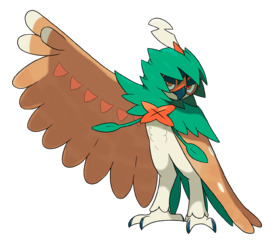
Decidueye’s special attack stat is pretty solid, so in theory you can use that to mix things up a bit. Unfortunately, basically his only worthwhile special attacks are Shadow Ball and Energy Ball/Grass Knot, and if you cut Spirit Shackle for Shadow Ball then you’ve sort of forsaken one of the most compelling reasons to use Decidueye in the first place. That’s not quite the end of the story; you might be gunning specifically for some big chunky physical tank with a Grass weakness like Hippowdon, who gets stung much harder by Grass Knot than by Leaf Blade even with minimal special attack training on Decidueye’s part. Also, most human opponents are going to assume Decidueye is a physical attacker, so if you can grab him a free turn to set up with Nasty Plot (which he also learns), you might just be able to catch someone with their pants down. I’m not sure this is particularly a good plan, and again I’m not encouraged by the fact that he essentially has no third special attack, but the possibility theoretically exists. Decidueye does have a support movepool of sorts, but you can probably find better Pokémon for any conceivable support role he might try to fill. Like, Baton Pass is there as an egg move (via Togetic or Oricorio), and again, Decidueye does get both Swords Dance and Nasty Plot, so he has perfectly sound options for using it, but he just looks so unlike my idea of what a Baton Passer ought to be (poor speed, average defences) that my mind sort of recoils from the notion. Alternatively you could try to ply Roost and Light Screen with some HP training into some kind of weird tanky Decidueye – give up trying to outrun things, since he’s slow anyway, and focus on your defences. Just don’t tell anyone it was my idea.
As well as a signature move, Decidueye has a unique ability; it’s his hidden ability and isn’t currently obtainable, but I think we’ll probably get it eventually, so we ought to talk about it before we finish up. This ability is Long Reach, which lets Decidueye treat his “contact” attacks as ranged instead, bypassing enemy effects like Static, Rough Skin, Beak Blast’s retributive burn, and so on. This… ehhh, I’m not really sure what this is for. I mean, I understand conceptually why Decidueye has this: he’s an archer, so he should be able to make what would normally be close-range attacks from a distance. But that aspect of the design is already expressed by his signature move, and by the fact that he can use ranged special attacks effectively. Most contact effects aren’t that big a deal, most Pokémon that get them have better abilities to choose from, and even when they’re likely to turn up, Decidueye would often prefer Spirit Shackle to Leaf Blade anyway. I think Long Reach would probably give Decidueye an extra edge against… Wigglytuff, Electrode, Parasect, Bewear, Stunfisk, and (lord help us) Delcatty. Being able to one-shot Bewear with Brave Bird after a Swords Dance is not nothing, but I suspect the more general Grass-type damage bonus from Overgrow would probably still be more useful, even once Long Reach becomes available.
So, all in all, this is a decent start to generation VII. Rowlet, Dartrix and Decidueye are nothing amazing; they have a couple of conflicting ideas in their design, and other than Spirit Shackle there’s not a whole lot to be impressed by in their skillset. They’re still interesting, though; as fighters they are at the very least passable, with an interesting niche courtesy of that neat little signature move, and I cannot stress enough that pinning a foe in place by the shadow is a very cool gimmick. I got my cool new Grass-type starter, all is right with the world, and I can now review the rest of the seventh generation joyfully and optimistically, without a hint of malice or discontent in my heart.
…well, I mean, I can try, anyway.
23 notes
·
View notes
Text
March Comes in Like a Lion Review
In honor of the second season coming out today, here’s my review of the first season.
(Second review so soon! Yay!)
Last week I finally got around to watching March Comes in Like a Lion, an anime about an orphan who is a professional shogi player at the ripe age of 17. It deals with trauma, loneliness, family, friendship, and everything else my sappy heart lives for ლ(´ڡ`ლ) The art and music are beautiful as well.
My first impression before watching was the story would be about Rei, a quiet and socially awkward boy, meeting the Kawamoto sisters and learning to open up and have a loving family. While the the story is essentially this, it is so much more than that. Rei might be quiet, it’s not in a socially awkward kind of way, he’s more reserved and closed off due to his circumstances. In reality, he is deeply caring and can easily speak his mind when given the chance. The problem is that he’s also naturally timid and doesn’t like imposing on others, which is fine, but these traits get worse after he is orphaned as a child. For those who haven’t watched the anime, Rei is adopted by a shogi professional (who was his dad’s friend and rival) and he becomes the man’s protege, quickly surpassing his adoptive siblings who hope to become professionals. After some time living with his adoptive family, Rei watches a documentary about a cuckoo and how it is a parasite and realizes that he is the cuckoo (a cuckoo egg is in different species’ nest where it then kills off the other eggs and is continued to be raised by the host bird). Pretty messed up right? He then decides that he should become independent and move out asap BC HE IS SUCH A SWEET BOY ;A; So Rei becomes a shogi professional in middle school (the 5th to do so), and he moves out after he graduates from middle school.
The kicker to all of this is that Rei doesn’t actually love shogi. Rei originally got into shogi because it was his only way of spending time with his real father. At his family’s funeral, his would-be step dad asks him if he likes shogi, and Rei lies saying yes. Rei describes this as a struggle to survive. He “makes a unbreakable contract with the god of shogi” so he could live with someone he knew and liked. And can you blame him? He’s only 7 at the time and the rest of his relatives are only concerned about themselves and he’s approached by the one man that makes him at ease. This one little lie becomes Rei’s life sentence.
We begin Rei’s story, then, with him waking up in an empty apartment and doing daily tasks only at of necessity. He goes to the shogi hall for competitions and occasionally goes to school out of a feeling of needing to go. Enter the Kawamoto sisters: Akari, the oldest and resident mom, Hina, the carefree middle-schooler, and Momo, the adorable kindergartner. They take in little stray Rei and becomes like family (so much that when mentioned that Rei isn’t related to them, Momo exclaims “What?? You’re not my older brother??”) The sisters don’t really allow Rei to seclude himself, pulling tricks like inviting him to dinner and then forcing him to buy ingredients to get him to come, and going to his apartment when they suspect he’s sick. Every scene with the 4 of them warms my heart. Every. Scene. So much I want more of them than what we were given!
For most of the season, Rei is at a slump, trying to figure out his motivation in life (join the club man) and how to move forward, and it’s his fellow shogi players who help him find his place. There’s Nikaidou who becomes Rei’s self-professed best friend and never hesitates to snap Rei back into reality, Smith and Issa who just enjoy Rei’s company, and Shimada who later becomes Rei’s mentor. Rei’s teacher, Hayashida, who’s always there to listen to Rei’s woes and pick him back up no matter how blunt he is. Also honorable mention to the lovable dorks of the Afterschool Burner Club who were willing to combine their club to a Shogi-Science club. You guys rock 👍
I also want to take the time to talk about Kyouko, Rei’s adoptive older sister. She is everything Rei is not: she’s impulsive, hot-headed, and poisoned-mouth. At first, your thought is what a bitch. All she does is torture poor Rei, most of it out of actual malice, some just to cause trouble, because she believes her father loves Rei more. Kyouko will randomly drop by Rei’s apartment just to inconvenience him and try to throw him off his game before a shogi match. But these two also have an interesting relationship that I can’t seem to figure out yet, because Kyouka also confides in Rei about her problems and insecurities. They have a deep bond, but they’re also practically strangers. I’m hoping that the 2nd season will explore this more.
Overall, I give the anime a 8/10. The story and art is amazing, but the way some of the episodes are set up is a little strange? There were a few where the ending theme would play, but there was still more episode left… The first season seems to be set like a build-up to the second season, which leaves it a little weak in my opinion. And as someone unfamiliar with shogi, when the characters talked about certain strategies, positions, and pieces, I was completely lost lol. Assuming shogi is like chess/checkers, not everyone can follow how a game plays out, so have some discretion if you plan on watching the anime.
I’m interested to see where the story will take us in the second season!
#continuing with my reviews woop woop#3-gatsu no lion#march comes in like a lion#minor spoilers#my reviews
0 notes
Link
NEW YORK — On Global Big Day last month, birders around the world counted all the species they could spot in 24 hours.
In Prospect Park, members of the Feminist Bird Club did their bit for this enormous citizen-scientist data collection effort.
Led by Molly Adams, its founder, the group clocked more than 80 species in less than 10 hours, including one black-billed cuckoo and a cerulean warbler.
These were good “gets”: The cerulean warbler is at risk of extinction — like so many birds, a casualty of habitat loss — so noting its whereabouts is particularly important for conservation efforts.
The cuckoo is not a rare bird, it’s just hard to see and not many of them stop in New York City during their migration; that made its sighting a bit of thrill, Adams said.
“We are seeing lots of males today,” she said, “because they are the first to arrive and establish territory. We’re not just excluding females here.”
She showed off her club’s iron-on patch, an embroidered spotted sandpiper, known for practicing polyandry (yours for a donation of $10 or more; the proceeds go to Black Lives Matter), and promised a female-bird-only walk sometime in the future. (Adams’ backpack was embellished with an “I Love Vultures” button, among other bird pins, but no patch because she does not own an iron.)
Although Adams, who is 28 and the outreach coordinator at the New York Aquarium, would certainly describe herself as a feminist, and her club’s manifesto reads, in part, that it is “dedicated to providing a safe opportunity to connect with the natural world in urban environments and having an ongoing conversation about intersectionality, activism, and the rights of all women, nonbinary folks, and members of the LGBTQ+ community,” this was not a dogmatic crowd, nor was it mono-gendered. The talk was of birds, not humans. Among the 15 or so attendees, there were semi-novices, sharp-eyed experts and total newbies.
“Look, there’s a rubber-soled black bike shoe,” said Michael Silber, 36, a graphic designer.
“I already had that on my list,” said Chelsea Lawrence, 28, a software tester for a television company.
Younger urban birders — yubbies? — like those led by Adams are the new faces in the birding world. They use social media to track their ornithological marks, with digital assists from apps like Ibird or Merlin and websites like ebird — the data collection site run by the Cornell Lab of Ornithology — which have replaced old-fashioned Sibley guides to aid in identification (although Sibley has an app, too). They are drawn in by the visual seductions of Instagram, as well as a desire for a community inflected by environmentalism. As Jonathan Franzen, still the literary world’s most famous birder, discovered, many soon find that without the structure of birding, “the stimulations of nature,” as Franzen wrote in “My Bird Problem,” his coming-out-as-a-birder essay in The New Yorker, remain “stubbornly theoretical, like sex on Prozac.”
They also keep up to date with Twitter, now abuzz with local bird alerts. David Barrett, 54, a hedge fund manager turned computer scientist, is the creator of several of New York City’s Twitter bird alerts, marvels of near instantaneous crowdsourced data. He is also the author of the birding memoir “A Big Manhattan Year,” in which he detailed his 2012 battle with Andrew Farnsworth, a noted ornithologist and birding record setter, to see the most species in a single year.
Bird documentaries — like “The Messenger,” out in 2015; “Birders: The Central Park Effect,” out in 2012, and “Emptying the Skies,” out the following year — have also been minting new birders, and making environmentalists out of them, as an “Inconvenient Truth” once did.
Pete Lengyel, a co-founder of the Kings County Brewers Collective, a craft beer brewery and tap room in Brooklyn, was hooked by “Birders” when he saw it a few years ago. Its filmmaker, Jeffrey Kimball, an urban birding convert, captured four seasons of Central Park’s birding community in an engaging portrait of its singular characters. There’s Starr Saphir, the flinty matriarchal figure who led birders even as she became significantly ill with cancer, and Chris Cooper, 55, a biomedical editor who birds by ear (using birdsong to identify his quarry) and whose exposition on what he called the “7 pleasures of birding” pops up all over the internet. Lengyel, 44, sent the film to all his friends and convened his own birding group, the Beerders, which includes two brewers, a baker, a butcher and a fashion designer — a nice cross-section of Brooklyn professions.
“We didn’t know how to interact with nature in the city, and now we have a sort of purpose,” he said, adding that they don’t go out too early, as the practices of his profession keep him from being a dawn riser. Cooper’s “7 pleasures” is a touchstone for his own birding passion. “No. 3 is the joy of hunting without bloodshed,” said Lengyel, a former Marine. “I got a camera early on to capture images, and I feel like I’m carrying a rifle around. The joy of collecting is No. 4. I’m still looking for a prothonotary warbler.”
He screened “Birders” and “The Messenger” at the Brewers Collective this past year, in a collaboration with the New York City chapter of the National Audubon Society. “The Messenger,” which chronicles songbird decline, left some in the audience in tears, he said. This fall, the bar will brew a beer called “Safe Flight,” an easy-drinking IPA with notes of citrus and pines (its sales will aid Audubon).
What to Do in Our Great Green Spaces?
Over the past few decades, as David Ringer, 34, chief network officer at Audubon, pointed out, cities have focused on creating more green spaces, making parks safer and making sure that all communities have better access to nature. “You see with these efforts a corresponding rise in birding,” he said.
Lawrence, the software tester on Adams’ Feminist Bird Club walk, said that her “spark�� bird — bird vernacular for the bird that hooks you like a gateway drug — was an American coot, spotted two years ago in Prospect Park. “It was so weird looking,” she said, “I had to go home and figure out what it was.” Now, armed with an old-school (bound, paper) Sibley, a trifold raptor guide and an app or two, she can easily separate the coots from the grebes.
She might spend half a Saturday in Prospect Park, but if she spots a warbler at lunchtime in the planter in front of her midtown office, “that’s birding, too,” she said. “I’m really into citizen science and data collection. It can be as competitive as you want it to be. It’s also really meditative. You have to be very present to be a good birder.”
Audubon’s market research has identified 9 million people between the ages of 18 and 35, Ringer said, “who share that blend of an interest in birds and environmental activism. Twenty five percent are Hispanic, 18 percent are African-American and 10 percent are Asian-American. It’s an amazing representation of the demographics of the country.”
“I think it’s a short path from the joy and wonder of birds to the recognition of what they’re telling us about the environment, and what that compels us to do,” he said.
Birds First!
It was after dusk on Sept. 11 a couple of years ago when Annie Novak, 35, an urban farmer, writer and educator at the New York Botanical Garden — once voted the cutest organic farmer in the country — became a birder. She was tending to a rooftop garden overlooking the Tribute in Light, the annual memorial in lower Manhattan, when she noticed thousands of flickering shapes in the beams. “I thought they were bats,” she said recently, “but was amazed to learn they were nocturnally migrating songbirds.”
Since that night, she’s been researching a book about night migration and the conservation challenges facing bird populations. She now volunteers for New York City Audubon, including for its annual monitoring program at the Tribute in Light, which pulls thousands of birds off course, putting them at risk for injury and exhaustion. (Volunteers assist with counting birds entrained in the beams. When more than a thousand are counted, the lights are turned off for 20 minutes, allowing the birds to disperse and fly on.)
“These species of birds have been flying over Manhattan for thousands of years,” she said. “There is more and more evidence that artificial light at night impacts these patterns of movement. It’s bittersweet to stand on the observation deck of the Empire State Building at night and watch migratory birds, lured in by city lights, circle the spire. It makes you realize how alive the night sky is above the city that never sleeps, which is why I don’t sleep much anymore.”
A taxonomy of birders, said Cooper, mirrors that of the birds. “Every year, you see the same species, but the experiences are different.” Cooper noted new stars like Jacob Drucker, once an elfin teenager whose skills are now off the chart; veterans, like Roger Pasquier, a long-tenured “Jedi master” in Cooper’s estimation, and Lee, a homeless woman who joined their ranks some years ago. “She watched us watching the birds, and asked what we were doing and someone gave her a pair of binoculars,” Cooper said. “We’re all obsessed, but in our own ways.”
A Rare Bird Draws Crowds
At about 5 p.m. on May 11, a Kirtland’s warbler was spotted in Central Park near the reservoir at West 90th Street. Twitter exploded with alerts, pulling ecstatic birders from all five boroughs into the park. “Rare Sighting of Kirtland’s Warbler Sends Birdwatchers Into Hushed Frenzy,” wrote Gothamist. With a migratory path from the Bahamas to Northern Michigan, the endangered songbird — a tiny puff of gray and yellow — has only been seen four times in New York state since the mid-1940s.
Ringer was at a performance of Aristophanes’ “The Birds” at St. Ann’s Warehouse in Brooklyn when the alerts went out. By the time he left the theater, it was too dark to head to the park. But he was there by 6 a.m. the next day, joining hundreds of rapt birders — including Cooper, Barrett and Adams, who missed seeing the warbler, twice, by minutes — in a crowd that swelled and ebbed over the next 24 or so hours. “We all lost our minds,” said Cooper.
By Sunday afternoon, the little guy had vanished. In the days that followed, birders poured their hearts out on their instas and their blogs, sated paparazzi having captured their Beyoncé. “Wow, just got my lifer,” one @pablo_dulce tweeted.
“In bird migration,” Ringer said, “there are always a few individuals who go their own way and end up off course. We’ll never know what happened to this one."By Penelope Green
This article originally appeared in The New York Times.
Penelope Green © 2018 The New York Times
via NewsSplashy - Latest Nigerian News Online,World Newspaper
0 notes
Text
How To Tell the Sex of Baby Chicks
By Don Schrider – Whether at the feed store choosing day-old chicks or hatching our own, all of us would probably enjoy knowing how to tell the sex of baby chicks to determine which are cockerels and which are pullets as soon as possible. Over the past 100 years there have been many methods developed for how to tell the sex of baby chicks; some methods proved haphazard, some have proven quite effective.
Before we take a look at the methods, it is important to remember the role chance can play in our success in learning how to tell the sex of baby chicks. Under normal conditions, a group of chicks generally hatch with 50-55 percent males and 50-45 percent females. So that means any method we use to determine the sex of the chicks has about a 50 percent chance of success – even if the method is erroneous. So if you pick up a chick and guess “pullet” you would be right half the time. For a method to be reliable then, it must be more than 50 percent accurate every time it is used.
Our best chicken secrets revealed with this FREE guide!
Even old pros say they got dozens of tips for their flocks by reading this guide. YES! I want this Free Guide »
THE EGG
Many people think that egg shape can be used as a method of learning how to tell the sex of baby chicks. According to this school of thought, pointed or elongated eggs will hatch cockerels and round eggs pullets. I have experimented with this method of how to tell the sex of baby chicks over the years (and there have been scientific studies as well) and the results reveal this method to be nearly useless. Pullets have been hatched from pointed eggs, males from round. If this method had worked, then the poultry industry would have been using this instead of paying for professionals to vent sex day-old chicks.
So how can some people have positive results? Are they lying? Well, in understanding how this method would have any supporters there is the issue of the hen to consider. You see, each hen tends to lay eggs of one shape fairly consistently. Next we need to understand that in avian species sex is not determined by the male, but by the female. The hen has the chromosome which lacks information and by which presence determines sex. Where male humans are XY and female humans XX, roosters are ZZ and hens Z0 (sometimes written ZW). So the male is needed to fertilize the egg, but it is the hen that determines the sex. Also, some hens tend to produce a larger percentage of offspring of one sex, just as in mammals some males tend to produce either more daughters or more sons. Add this all together and you can see that if you have a hen that tends to produce largely daughters and lays round eggs, or produces largely sons and happens to lay pointed eggs, she will “prove” that egg shape determines sex.
Life would be easy for we poultrymen if we could know how to tell the sex of baby chicks by egg shape, but we simply cannot. (For the record, chicken egg colors also have no bearing on the sex of the baby chick inside of it, too.)
TEMPERATURE
My neighbor is a veteran poultryman and full of knowledge on all subjects poultry. One of the things he pointed out is that incubator temperature affects the percentage of male-to-female chicks. This is not to say that what would be a male chick can convert to female, remember, the hen determines the sex. So what seems to be at work here is survival of the embryo—more females at lower temperature; more males at higher temperature. The adjustment is just a half a degree Fahrenheit up or down.
Weather patterns also seem to have an effect on fertility and on male-to-female percentages in poultry and livestock. This phenomenon has been observed by farmers for centuries. In mammals, it seems to have something to do with conditions favorable to male producing vs. female producing sperm cells. In avians, the effects are likely influencing body temperature of the hen, possibly affecting which sex she produces, but certainly impacting her ability to maintain the semen in a viable state until fertilization.
Temperature is worth further investigation, but do not expect landslide results in using this method for how to sex baby chicks.
VENT SEXING
Vent Sexing was discovered by the Japanese in 1920 as a reliable and novel approach to determining the sex of day-old chickens. In 1933, Professors Masui and Hashimoto published “Sexing Baby Chickens” in English. In 1934 Dr. Kiyoshi Oxawa visited North America and taught the method in Queensland. From 1935 onward, this method of how to tell the sex of baby chicks was quickly adopted by large-scale poultry companies across North America. It was the first reliable method of determining the sex of chicks and hatcheries use this method even today.
Vent sexing is a procedure of holding the day-old chick in one hand, spreading open the vent, and viewing the copulatory organs to determine sex based on shape. Warning: there are 18 different shapes possible with a two female and two male shapes that will appear as close matches for the opposite sex. Essentially, the view reveals a shape much like a necklace with “beads” of different sizes, largest in the center. The males have a round/globe-like center “bead”; the females have a flat or concave center “bead.” Skilled vent sexers historically have had a 90% success ratio, with some modern reports claiming a success ratio of 95%. In any case, this method of how to tell the sex of baby chicks does work very well, but requires skill and training.
DOWN COLOR
There are many instances when a chick’s down color can be used as a method for how to tell the sex of baby chicks. For more than 100 years, and possibly more like a thousand years, poultrymen raising chickens with the wild-type color pattern (Black-Breasted Red, Light Brown, Silver Duckwing, etc.) have been able to tell the male chicks from the female chicks at hatch by down color. The males have clean heads with only two colors of dorsal stripes, which often end in a dot at the crown; females have three colors of dorsal stripes, a black or dark brown added outside the other two, and the strips typically run to and through the crown.
Some other heritage chicken breeds that can often be sexed at hatch include Barred Plymouth Rocks that produce chicks that are black with spots of yellow or white. Old research demonstrates that there are subtle differences in the light colored down around and on their wings—the males having more light color. But the better method is to note that male chicks tend to have yellow spots on their heads. This will prove true in other Barred or Cuckoo patterned chicken breeds. Both New Hampshires and Buff Orpingtons produce buff colored chicks. If one closely observes these chicks it will be noticed that the male chicks will have off-white streaks in the down color at the upper wing joints. Female chicks will often have a brown or black spot on their heads, or even hints of brown lines on their backs. I have found this true for my Buckeye chicks as well, though they are richer in down color.
When crossing varieties or breeds the chicks often can be sexed based upon down color. The classic cross is of color patterns of gold with those of silver. (In color genetics, gold is the gene that produces red color and silver is the gene that produces white color.) Examples include gold males such as Rhode Island Red, Buff Orpington, New Hampshire crossed to silver females such as Rhode Island White, White Plymouth Rock, Delaware, Light Sussex, White Wyandotte. Male chicks from these crosses will have whitish, grey, or pale brown down. Female chicks will have reddish-brown or buff down. The Dutch have been crossing Golden Campine males to Silver Campine females for centuries to produce chicks that can be sexed at day-old based upon down color.
Using a wild-type, or Black Red male, like Brown Leghorn, Dark Cornish, or BBRed Old English Game, with the silver pattern females yields chicks where the males will have a lighter, grayish color, particularly on the dorsal stripes, and females will have brown stripes and markings. When a non-barred male is used, such as any solid black male, or even an Ancona or Rhode Island Red, the chicks will all be black or dark brown with varying degrees of white in their down—but the male chicks will have a white spot on their heads.
In chicks from sexlink crossbreeds or other hybrid chicken breeds, we can often use down color as a method for how to tell the sex of baby chicks. In Black Sexlinks, the female chicks are black and the male chicks have a white spot on their heads. In the Red Sexlinks (think Golden Comets, ISA Browns, Cinnamon Queens, etc.) the male chicks are often white and the females red or buff. In some cases the males may be buff and the females can be recognized by a black dot on their heads and may have some brown or black lines on their backs.
So the simplest rule in sexing chicks by down color is to remember males have lighter heads, sometimes with a white or yellow spot, and females have darker down color often with a black or brown spot or stripes on their heads or with darker stripes on their backs.
FEATHER SEXING
It has been found that crossing a fast feathering breed rooster to a slow feathering breed hen will result in chicks in which the pullets will have noticeably better developed wing feathers at birth. By day 10, the cockerels will have caught up on feather development, so check early. In some breeds or strains male and female chicks can also be sexed by looking at their wing feathers at day-old: males will have an even role of feathers and females will have some long and some short, alternating. My Buckeyes are fairly slow feathering and my Brown Leghorns are decidedly fast feathering, but I can see no differences between the sexes with either breed. Still, this method has proven to work for some strains, and might work for yours.
OLD METHODS
Some early methods of sexing a day-old chick include dangling a ring from a string over the chick—if it moves back and forth the chick is male, if it makes a circle the chick is female. I suppose magnetism is supposed to be at work here, but the end result is that this method does not work.
In some old books there are three very interesting methods. One where the chick is hung upside down in your fingers—female chicks flap and try to right themselves, males just hang. The second method I found very intriguing; that of picking the chick up by the scruff of the neck. In this one if the chick lets it legs hang it is a boy, if it draws its legs up to its breast it is female. This is eliciting a sexual response in the chick. When I first saw this method at work it proved 100% on a handful of chicks. Trying it with my own chicks, whose sex I can tell by down color, proved nearly totally inaccurate. The last method is that of placing the chick on its back in your hand; females will stop kicking after a little while, and males will continue to kick. Again, I observed no positive results.
OTHER METHODS
Time is the big equalizer in determining a chick’s sex. When we first start in poultry it is hard for us to see the differences in the boys and the girls. But as our experience grows, we can often see the differences by three or four weeks of age. So what is it that we learn to look for? In heavy breeds, cockerels will tend to feather in a patchy manner while pullets will feather more evenly. Cockerels also will begin to develop combs at an early age—males being distinguishable by three to four weeks in breeds with large single combs; at six weeks for males with a pea comb. In breeds in which the plumage color varies from male to female, males will begin to show their “true colors” at around six weeks of age. By eight weeks of age males of most breeds will begin to produce long, pointed saddle, hackle, and sickle feathers; females of all breeds tend to have broad, round feathers in these same sections. My Leghorn cockerels even begin crowing between four and six weeks of age!
There are differences in behavior we can notice as well. Cockerels tend to be generally bolder than pullets. They are less likely to scatter if you clap suddenly, whistle, or even wave a hat. When startled, cockerels will stand erect and give a warning chirp, while females are more likely to crouch down and remain silent (except in my Leghorns…). Female chicks may have wider pubic bones than male chicks, though this is only accurate depending on bloodline and selection for egg production. Males also tend to have larger feet and thicker legs than females. This is a trait I have noticed in the Buckeyes at hatch and within a few days in my Leghorns. But it is also a trait that becomes more noticeable as the chicks mature.
CONCLUSION
The most accurate method for how to tell the sex of baby chicks of any breed is that of vent sexing. But for those of us without the desire to learn this method, knowing our stock and observing down color, wing feathering, and development of the chicks will let us know the boys from the girls at an early age as well. Watch your chicks and see if any of the above methods work for you.
Originally published in 2011 and regularly vetted for accuracy.
How To Tell the Sex of Baby Chicks was originally posted by All About Chickens
0 notes
Photo

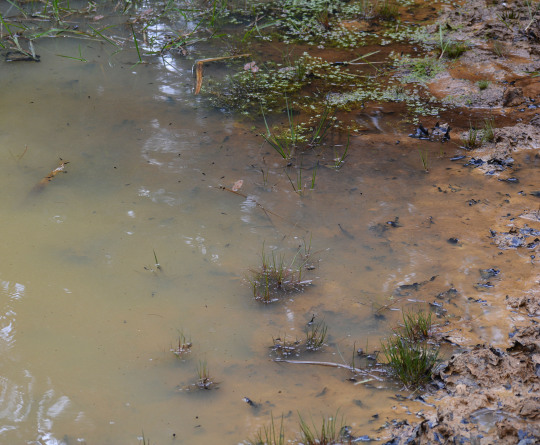
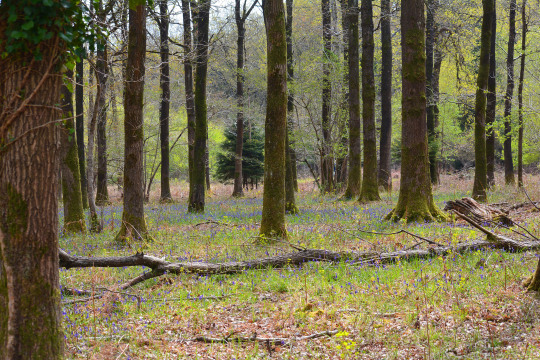


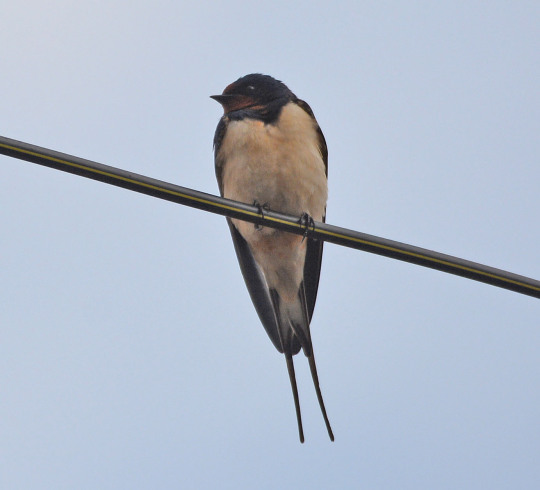

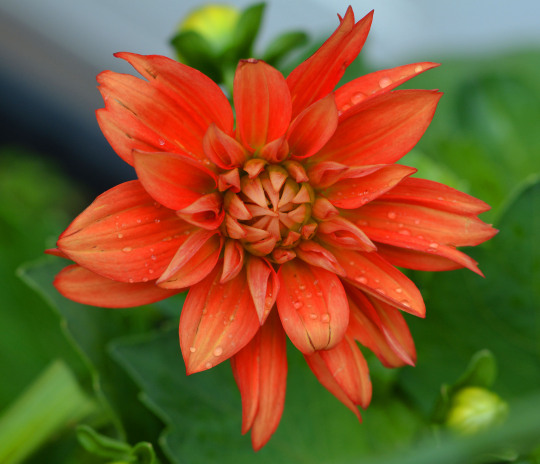
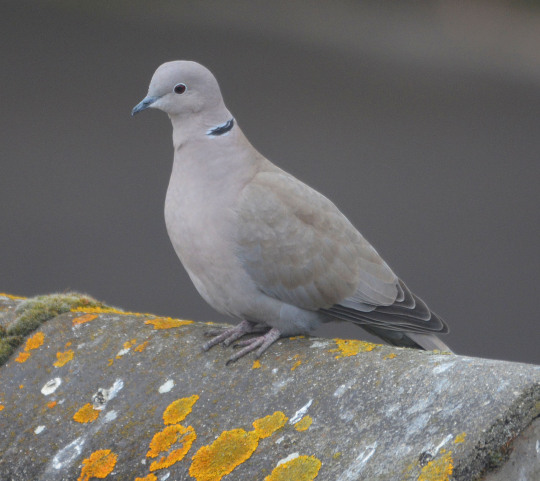

2nd May 2021: Dawn chorus day, other garden and home moments, Bentley Wood, Swallows and yellow fields
This morning I set my alarm at a couple of early morning intervals, just before 5am and just after 6am to spend some time listening for the dawn chorus on International Dawn Chorus Day. I was thrilled to listen to the immensely beautiful, enriching and so special to hear fluent wall of sound from Blackbird, Robin, Song Thrush etc. facing into the chilled morning air as I briefly brought back some woolly clothing to really lean into the air out the window to hear the sounds of the birdsong coming from the direction of Lakeside where we had enjoyed a dawn chorus before. I loved doing a little recording of this amazing sound on my phone as I did with “Colin” the Cuckoo at Thursley Common recently when he called so loudly and well. By the second wake up after sunrise, the closer sound of a House Sparrow that had arrived in the garden, as well as a persistent Jackdaw calling could be heard. And the familiar loud call of a Collared Dove sounded as I drifted off back to sleep. A stunning and wonderful natural experience one of my most connected moments to nature this year. It really was amazing just observing the world when the human life is sleeping and everything is quiet and hear the birds take over. I had been meaning to go out or listen out the window for a dawn chorus again for ages and I clocked onto this event last year but did a literal dawn one when it got light and heard the tail end of it but this year it was great to do it in the darkness and hear so much.
I enjoyed seeing a Magpie and Starlings in the garden later on in the morning when properly up which I tweeted pictures of on Dans_Pictures tonight as I did with a lot of the species and scenes I mention in this post.
Today we went to Bentley Wood shown in the first picture I took today in this photoset as we hoped to maybe see some butterflies on a bright patch of another possibly showery day. Mostly something we come here every May to try and see the Pearl-bordered Fritillary coming to this butterfly haven to try and see them one of the rituals of our butterfly year. We walked through the usual extensive and well vegetated field area shown by the fifth picture in this photoset from the car park back towards the road to try and see them, the field adorned by the colour of flowers including primroses, wood anemone and as usual bluebells in great numbers as well as greater stitchwort and spurge too which seemed to be everywhere today and I had seen here before but didn’t know what they were before I had the PlantNet app they are nice glowing green interestingly shaped flowers. There were lesser celandine and other great flowers around on the whole walk today too.
After walking down the fence line quite a way, where we had seen them before early in the season and a kind gentleman we saw who we actually saw last Saturday at Martin Down too and spoke too said he’d seen a few Pearl-bordered Fritillaries and not seen one the sun just looked like it might go behind a cloud. It did feel as commented by someone else we saw later on quite warm in this corner and great Orange Tip and Green-veined White views proved it paid to be out and here as butterflies and other insects were in the air between showers. Then all of a sudden it all changed in a split second when I looked to the right downwards and in a flash saw the orange glow of a Pearl-bordered Fritillary. It settled a few times and flew on too and we spent a glorious few minutes taking it in and following it, enjoying this butterfly one of our most precious. It was another smashing butterfly to see lately my 15th butterfly of the year. It felt joyful to see and efficient in terms of getting it seen seeing one in a showery day and as we walked on sure enough a shower did come. It was nice to see another butterfly for the first time in my year this weekend as my season builds well.
I actually saw my first Pearl-bordered Fritillary of the year in 2020 a year ago today. It was interesting the slight difference in the months before last year and this year as leading up to a year ago today there was a long dry, sunny and very warm spell. We’ve had our fair share of that this year too of course, but also changeable and cooler weather too. The last three months had a way of building out of overcast, cold or wet weather and growing into really sunny and warm patches towards the end. But some things in nature are so stubbornly and beautifully consistent so it was great to see the same butterfly for the first time this year on this day. That day a year ago it was like so many of the butterfly species I saw in 2020 my earliest ever sighting of one in a year so I’ve now tied that which is nice.
As we walked on after the shower towards the big ponds I liked taking in dramatic sky scenes and seeing my first tadpoles of the year on one of the ponds which I took the second picture in this photoset of. We noticed a delicious sea of bluebells in the woods which we walked closer to so that we could take them in I took the third picture in this photoset among others of them, an absolutely gorgeous and stunning classic spring time scene to take in as the sun reappeared another precious immersive natural experience today. I also took the fourth picture in this photoset of the path as we walked on.
As we walked back down the main path we had two more wonderful moments with wildlife. Firstly an extensive and beautiful herd of Fallow Deers bounded across the path, it was spectacular and sensational to watch and just take in making our their beautiful markings. I wasn’t quite quick enough for a photo but it was just amazing to see them and I saw one on the way in too. Then we got a special view of my first ever oil beetle a great creature to see and spend a few minutes watching it scuttle along. It’s really satisfying after learning a few of them last year to get my beetle season up and running this year recently my first new one of the year.
We ended the walk in the field and liked seeing Chiffchaff, Wren, Great Tit, hear Blackbird and Song Thrush once more today and other little birds in a great patch of time seeing some. On the way home it was an eventful one for seeing things, first two splendid Swallows sat famously on a wire at West Dean right on the Hampshire/Wiltshire border which we saw for a great prolonged period getting to make out the birds so well and some top photo opportunities which I loved I manged the sixth picture in this photoset of one. We also saw another special yellow oilseed rape field shown in the seventh picture I took today in this photoset which it was good to take in and photograph. On the way I saw a few fields getting more and more solid yellow as we went along. I took the final three pictures in this photoset when home of a new beautiful dahlia in the garden one of my favourite flowers in the garden last year, Collared Dove out the back I loved seeing as I tweeted a picture of two of them and two Woodpigeons on the roof visible from my room as the sun was going down reminding me of humans at a conference or something and a sky scene in a memorable evening for looking at the sky out my window as the sun came down and things got red too. A perfect, varied and fulfilling day in nature. I hope you’ve all had a good Sunday.
Wildlife Sightings Summary at Bentley Wood: My first Pearl-bordered Fritillary and tadpoles of the year, my first ever oil beetle, one of my favourite butterflies the Orange Tip as well as Brimstone, Speckled Wood and Green-veined White having a little battle with and somewhat dwarfing the Orange Tip which was interesting, one of my favourite mammals the Fallow Deer, Blackbird, Mistle Thrush very nicely at the start, Robin, Wren, Great Tit, Chiffchaff and interesting flies.
#pearl bordered fritillary#bentley wood#orange tip#tadpole#oil beetle#fallow deer#fallow deers#chiffchaff#collared dove#woodpigeon#robin#blackbird#song thrush#house sparrow#dawn chorus#dawn chorus day#international dawn chorus day#morning#england#world#hampshire#swallow#speckled wood#brimstone#spring#nature#wire#west dean#wiltshire#uk
6 notes
·
View notes
Photo


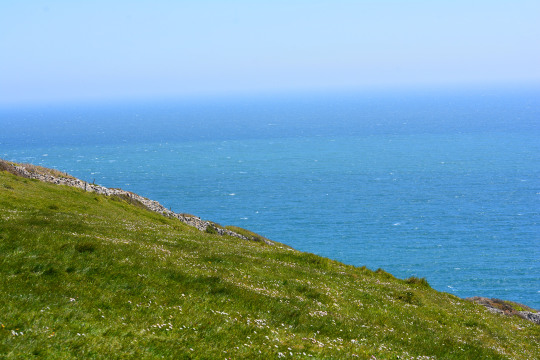






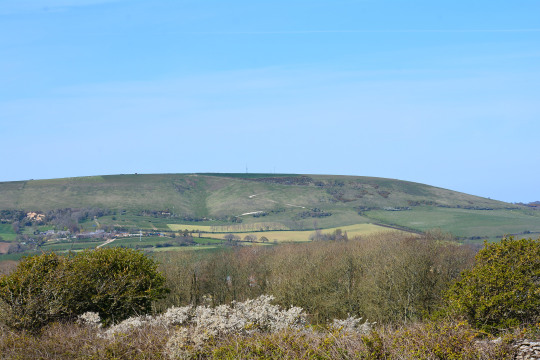
23/04/2021-Dancing Ledge (Ten different photos to those I tweeted tonight)
We did our final planned trip of the week days of in this patch of leave. Our annual Purbeck coast pilgrimage to Durlston near Swanage in April to see seabirds particularly, breathtaking views and anything else often flowers as was the case today. I wrote about our time at Durlston today in my next post, as this year we did something slightly different and before going to Durlston went to the National Trust’s Spyway car park and walked down to the beautiful Dancing Ledge. We had been here three times before, walking from Durlston in both 2007 and 2009 getting an exciting glimpse of our first ever Puffin on the former a key day for our birdwatching and wildlife life and love of seabirds especially early on and we came in 2013 too after a Durlston trip one Saturday. So this was a very exciting day.
We walked along the well laid path from the car park down to Dancing Ledge the beautiful area shown in the first picture I took today in this photoset, where Swallows skimmed over the grass and Skylarks performed overhead. Very soon into the walk we achieved a goal of the day when I heard and spotted a bird in a bush, it had the exquisite bright brown back which glowed in the sun, spendid grey head and of course creamy throat of the Whitethroat. A key spring bird target of ours and one I have had such a good record for seeing in the Durlston area on the trip the past few years so with Guillemot, Razorbill, Fulmar, Gannet and though we didn’t see them today Wheatear and House Martin other common year ticks on this trip already seen by me this year, really Whitethroat was the key year list target today and it did not disappoint, we saw one coming up the hill on the way back too and saw some at Durlston later in the day. It was wonderful to see this beautiful bird back in the UK. My year list now stands at 145, only my 2018 and 2019 year list my highest ever totals was higher at this point in a year, and I didn’t reach this figure until May last year, which is another stunning moment to show how my revival of my year list after full lockdown has been so spectacular. I have so far got fourteen year ticks during my week off which I am over the moon with and that makes it twenty six year ticks this April, leveling my highest ever amount of them I got this month in 2014 which was phenomenal and something I found so amazing with some really high calibre species seen along the way and it’s really something I am so proud of.
In order to get to Dancing Ledge from these fields full of life, including Blackbirds with young too, we had to go down a massive and steep hill. From here, before and when we reached this striking coastal feature we took in some simply breathtaking and sensational views especially seeing right down the coast my very favourite type of coastline and type of habitat really. In pristine, brightly sunny, pretty warm and sparkly blue conditions it just looked so purely beautiful and I took the second and third pictures in this photoset from the walk and ninth and tenth from the walk back and fourth at Dancing Ledge as we went down a rocky path to beside the water.
Whilst despite me wearing a Skomer Island shirt with them on we didn’t see any of Dorset’s very few Puffins, we saw a good deal of birds at Dancing Ledge, Guillemots and Razorbills sat and flew over so gently on the bright blue water. Rock Pipit and a bright crimson almost paint dipped Linnet made very pleasurable sightings. As we spoke at a safe social distance to a lovely gentleman in great weather once again we spoke to a few brilliant people today we all enjoyed seeing a good few Shags with one appearing to build a nest on the cliff. A special moment with one of my B list favourite birds which I am having a good year for. I took the fifth picture in this photoset of some of the Guillemots and Razorbills here.
We made our way back up the hill and got our flower fix for the day started as we were over the moon to spot this star of Durlston ever year for us and as we would learn this similar area too some early spider orchids starting to come out I took the seventh picture in this photoset of one. We enjoyed some special moments with these stunning and distinctively marked flowers I do love orchids. I got my macro lens out and I took a good few pictures of them. The early spiders are interestingly placed in my camp of flowers I knew before 2020, I have said loads before that noticing and learning more flowers was my main lockdown/working from home project last year. So everything I did with these I did it at a greater scale today really making the most of them. But also with our usual April visit here last year postponed until late June by lockdown I missed these so this was the first time I got to photograph these flowers which I did well before for me especially in 2016 when one was the subject of my first ever flower Twitter display picture with my treasured new macro lens which I’ve probably taken more flower pictures with than my initial macro lens with my interest really increasing the past year or so since I got that macro lens for my birthday in 2020.
It was also nice to see speedwell here and some other flowers which I took the sixth and eighth picture in this photoset of. Further colour was added to a glorious walk of quintessential farmland birds by a Yellowhammer it was great to see clearer than the one we saw at Martin Down on Good Friday. We left for Durlston feeling so happy that we got to see the attractive Dancing Ledge for the first time in eight years and all this walk had to offer. We only did this today as one of the kind people we got talking to at a safe social distance whilst watching “Colin” the Cuckoo at Thursley on Wednesday mentioned this walk as she had been and recommended it highly. Having ticked the four seabird species at Portland that we often would at Durlston in a year we could afford to do things differently today and I’m glad we did. I shall get my post about what happened at Durlston today shortly.
Wildlife Sightings Summary: My first Whitethroat of the year, two of my favourite birds the Guillemot and Razorbill, Shag, Herring Gull seen very well on the low rocks at the ledge by the sea, Rock Pipit, Meadow Pipit, Yellowhammer, Skylark, Linnet, Swallow, Blackbird, House Sparrow we have seen so many of these on our rural trips this week a common urban bird which is always great and Jackdaw.
#jackdaw#house sparrow#whitethroat#favourite#razorbill#shag#guillemot#puffin#fulmar#gannet#yellowhammer#linnet#skylark#blackbird#uk#england#dorset#durlston#spyway#national trust#walk#happy#hampshire#world#beautiful#lovely#sunny#day#perfect#spring
4 notes
·
View notes
Photo










12/06/2021-Rose-coloured Starling and more at Martin Down
We arrived at Martin Down where we had come mostly to try and see the rare Rose-coloured Starling also known as Rosy Starling which had been around here and we’d never seen before. It was attention on insects as we began our walk at this rich and biodiverse national nature reserve two weeks after coming here on our third of three consecutive Saturdays. First we saw some delightful Five-spot Burnets flitting around on flowers we saw a good half dozen of these as the walk went on with some mating too. I took the first picture in this photoset among others which I tweeted tonight on Dans_Pictures of these moths. It was lovely to see the rich and pronounced colours of this one of my favourite moths and the species that got me into moths eleven years ago seeing one at Lakeside Country Park. I always look forward to see these and the six spots every spring and summer. Butterflies were abundant here today of course, Small Heath and Brimstone were on the wing in numbers and it was nice to see Large White, Adonis Blue, Common Blues a lot too so it was great to observe the differences between adonis and common and I got very close to one Small Blue taking a photo which I tweeted, Small Copper and some precious Painted Ladies. There were some other little moths around too. I took the second-fourth and ninth and tenth pictures in this photoset of beautiful views here.
I loved seeing Buzzard, Skylark, Corn Bunting and Yellowhammer again with lots of the last three at this haven for them and some really very well with some very intimate views once more of three precious species as I had such a good time out. Hearing and seeing Corn Buntings has been fantastic every time we’ve been here this year and today added to that well. I took the seventh picture in this photoset of one later on here today which I was pleased with as I was with another that I tweeted of it too. I perhaps benefited today from bringing my bridge camera great for the long distance shots especially birds for only the third time bringing it to Martin Down as I can never leave the macro at home when coming here as this is a strong butterfly, other insect and flower location which usually means I leave the bridge at home as its usually either/or in my bag in the season the macro coming on walks that will very likely involve butterflies and the bridge camera more birding ones alongside the usual DSLR with normal lens and big lens. We did see some stunning Skylarks flying today which I always love here as well as hearing their compelling and beautiful song and I heard the whoosh of one’s wings a bit as it took off which was nice. We then after getting chatting to people at a safe social distance determined where the Rose-coloured Starling had been seen today down a path veering off to the left when coming from the upper car park along the main track just before reaching the sloping of the ridge. As we went in beside the blooming vegetation we heard the charming onomatopoeic call of the Cuckoo one of my favourite birds and a star of Martin Down so lovely to hear it here again this year. We got down to where it had it been seen with the Rosy Starling not showing for a couple of hours or so and discussed this with a fellow birder who had been here about that amount of time and had a good conversation as we expected to have to wait it out to see if we could see it. Then all of a sudden the Rose-coloured Starling flew into a nearby tree! I instinctively said “That’s it, isn’t it” and the man we were talking too said “yes” as my Mum got onto the bird too but I knew exactly what it was the minute I saw it. Yes the colours resemble Magpies and yes it is obviously Starling size but this bird looked like absolutely nothing else to me. It was so distinctive. And I was over the moon to get to watch this bird shuffle into thick vegetation, fly out and over to another tree where it did very much the same then fly off again and go into thick bushes. It looked stunning with a really sweet, delicious, milky and nicely colourful plumage. It was an incredible bird to see, and one I have been wanting to see for a while. What a moment. It was great to then point it out to another birder a bit further along as we all reflected on how great it is to share information and birds and the great social side of the hobby. The bird is just visible in the record shot in the sixth picture in this photoset. This was a brilliant bird to see and it was my first new bird of 2021. Five whole months and 11 whole days without a life tick in a year was the longest I’ve ever waited to tick a completely new species in a year and it was eight months and one day since my our last new bird Pennington’s Wilson’s Phalarope in October 2020. I think this is the longest I’ve waited between new birds since between some at Radipole Lake in March 2012 and my first ever Purple Sandpipers at Southsea in March 2013. Obviously the mostly locked down winter contributed to that and the health of the nation had to come first. I do just feel so lucky to have seen something new again and it was always going to be so sweet if I was going to see a new bird this year. It’s a species I am so thankful that did end this drought. It’s my 273rd bird in my life and 157th this year my year list the third a year list of mine has ever been on on this date behind my two highest ever year list totals 2018 and 2019 with other previous years closer behind it on the date now and it is my first year tick of the month so I had that moment once again to say I still haven’t gone one month since November 2015 which I didn’t get at least one bird year tick in which is always great. It was just really good to explore another bit of our beloved Martin Down today too it really was another very beautiful meadows area with lots of wild trees and bushes. It’s always good to learn a new area of a reserve or walk we go to or do. We ended it in the searing heat going to a bit we do know intimately to walk past the ridge, along the dyke area and up to where the burnt-tip orchids usually are which we had seen just starting to raise their heads. On the way alongside lots of nice flowers including heath spotted orchid, my first ever thyme I recall seeing, speedwell earlier on in the walk, bird’s-foot trefoil I took a memorable pictrue for me of this and heath spotted-orchid together there were swathes of flowers around which was so good today, ground-ivy which I got the fifth picture in this photoset of one I learned at Lakeside this week, buttercups and others which I enjoyed on the whole walk, the place was teaming with Adonis Blues this a key area of this key reserve for them. I saw dozens and was so thrilled to have their enthralling electric shade of blue flashed at me as they zipped by. Glorious moments with one of my favourite butterflies. Its interesting the last new bird I saw at Martin Down Corn Bunting in 2016 so I’ve had quite a journey with them to now see them so much when coming here a struggling species that this is such a refuge for, and that was seen on the Saturday of the second May bank holiday that year less than a week after seeing my first ever Stilt Sandpiper at Pennington and we’d go on to see our first ever rarity Great Spotted Cuckoo at Portland the next day and first ever Nightjars at Bolderwood in the New Forest a couple of weeks later. And that Saturday I recall a stellar cast of butterfly sightings that day with so many firsts for the year and brilliant views with Adonis Blue very much at the heart of that so it was great to think that Adonis Blues still had that role today. Just before reaching the Burnt-tip orchid area I enjoyed seeing a Red Kite soar over the adjoining fields where they very often go. Then I was delighted in my week of orchids to see two groups of fully emerged burnt-tip orchids. I took the eighth picture in this photoset alongside one I tweeted of them. One of the most precious and wonderful flowers we have it was a pleasure to be with them. I saw bright red Linnets well on the way back. Well today was a sensational and packed Saturday in the sun. We saw some of the greatest wildlife the UK has to offer in some amazing places. I hinted yesterday that in the coming weeks and days we have some big things coming up and this fits the really high standard of birds in particular and other wildlife we can see during that time. I felt myself being very content and relaxed today. Wildlife Sightings Summary for Martin Down: My first ever Rose-coloured Starling, my first of one of my favourite moths the Five-spot Burnet of the year, two of my favourite birds the Red Kite and Buzzard, one of my favourite butterflies the Adonis Blue, Skylark, Corn Bunting, Yellowhammer, Linnet, Stonechat well too, Blackbird, Magpie, Rook, Small Heath, Small Copper, Common Blue, Small Blue, Brimstone, Painted Lady, Large White and other moths.
My last post about some wildlife seen and photos taken at home today and a stop off and on the way in through the New Forest is here: https://dansnaturepictures.tumblr.com/post/653827659048140800/12062021-blog-1-of-2-home-and-new-forest-on-the
#painted lady#brimstone#small blue#large white#small copper#small heath#rook#magpie#blackbird#stonechat#linnet#yellowhammer#corn bunting#skylark#adonis blue#buzzard#red kite#five-spot burnet#rose-coloured starling#rosy starling#martin down#dorset#hampshire#england#uk#europe#world#beautiful#lovely#happy
2 notes
·
View notes
Text
How To Tell the Sex of Baby Chicks
By Don Schrider – Whether at the feed store choosing day-old chicks or hatching our own, all of us would probably enjoy knowing how to tell the sex of baby chicks to determine which are cockerels and which are pullets as soon as possible. Over the past 100 years there have been many methods developed for how to tell the sex of baby chicks; some methods proved haphazard, some have proven quite effective.
Before we take a look at the methods, it is important to remember the role chance can play in our success in learning how to tell the sex of baby chicks. Under normal conditions, a group of chicks generally hatch with 50-55% males and 50-45% females. So that means any method we use to determine the sex of the chicks has about a 50% chance of success – even if the method is erroneous. So if you pick up a chick and guess “pullet” you would be right half the time. For a method to be reliable then, it must be more than 50% accurate every time it is used.
A week-by-week guide to a happy, healthy flock!
Our friends from Purina® wrote this free guide to help you enjoy your first year with chickens. YES! I want this Free Report »
THE EGG
Many people think that egg shape can be used as a method of learning how to tell the sex of baby chicks. According to this school of thought, pointed or elongated eggs will hatch cockerels and round eggs pullets. I have experimented with this method of how to tell the sex of baby chicks over the years (and there have been scientific studies as well) and the results reveal this method to be nearly useless. Pullets have been hatched from pointed eggs, males from round. If this method had worked, then the poultry industry would have been using this instead of paying for professionals to vent sex day-old chicks.
So how can some people have positive results? Are they lying? Well, in understanding how this method would have any supporters there is the issue of the hen to consider. You see, each hen tends to lay eggs of one shape fairly consistently. Next we need to understand that in avian species sex is not determined by the male, but by the female. The hen has the chromosome which lacks information and by which presence determines sex. Where male humans are XY and female humans XX, roosters are ZZ and hens Z0 (sometimes written ZW). So the male is needed to fertilize the egg, but it is the hen that determines the sex. Also, some hens tend to produce a larger percentage of offspring of one sex, just as in mammals some males tend to produce either more daughters or more sons. Add this all together and you can see that if you have a hen that tends to produce largely daughters and lays round eggs, or produces largely sons and happens to lay pointed eggs, she will “prove” that egg shape determines sex.
Life would be easy for we poultrymen if we could know how to tell the sex of baby chicks by egg shape, but we simply cannot. (For the record, chicken egg colors also have no bearing on the sex of the baby chick inside of it, too.)
TEMPERATURE
My neighbor is a veteran poultryman and full of knowledge on all subjects poultry. One of the things he pointed out is that incubator temperature affects the percentage of male-to-female chicks. This is not to say that what would be a male chick can convert to female, remember, the hen determines the sex. So what seems to be at work here is survival of the embryo—more females at lower temperature; more males at higher temperature. The adjustment is just a half a degree Fahrenheit up or down.
Weather patterns also seem to have an effect on fertility and on male-to-female percentages in poultry and livestock. This phenomenon has been observed by farmers for centuries. In mammals, it seems to have something to do with conditions favorable to male producing vs. female producing sperm cells. In avians, the effects are likely influencing body temperature of the hen, possibly affecting which sex she produces, but certainly impacting her ability to maintain the semen in a viable state until fertilization.
Temperature is worth further investigation, but do not expect landslide results in using this method for how to sex baby chicks.
VENT SEXING
Vent Sexing was discovered by the Japanese in 1920 as a reliable and novel approach to determining the sex of day-old chickens. In 1933, Professors Masui and Hashimoto published “Sexing Baby Chickens” in English. In 1934 Dr. Kiyoshi Oxawa visited North America and taught the method in Queensland. From 1935 onward, this method of how to tell the sex of baby chicks was quickly adopted by large-scale poultry companies across North America. It was the first reliable method of determining the sex of chicks and hatcheries use this method even today.
Vent sexing is a procedure of holding the day-old chick in one hand, spreading open the vent, and viewing the copulatory organs to determine sex based on shape. Warning: there are 18 different shapes possible with a two female and two male shapes that will appear as close matches for the opposite sex. Essentially, the view reveals a shape much like a necklace with “beads” of different sizes, largest in the center. The males have a round/globe-like center “bead”; the females have a flat or concave center “bead.” Skilled vent sexers historically have had a 90% success ratio, with some modern reports claiming a success ratio of 95%. In any case, this method of how to tell the sex of baby chicks does work very well, but requires skill and training.
DOWN COLOR
There are many instances when a chick’s down color can be used as a method for how to tell the sex of baby chicks. For more than 100 years, and possibly more like a thousand years, poultrymen raising chickens with the wild-type color pattern (Black-Breasted Red, Light Brown, Silver Duckwing, etc.) have been able to tell the male chicks from the female chicks at hatch by down color. The males have clean heads with only two colors of dorsal stripes, which often end in a dot at the crown; females have three colors of dorsal stripes, a black or dark brown added outside the other two, and the strips typically run to and through the crown.
Some other heritage chicken breeds that can often be sexed at hatch include Barred Plymouth Rocks that produce chicks that are black with spots of yellow or white. Old research demonstrates that there are subtle differences in the light colored down around and on their wings—the males having more light color. But the better method is to note that male chicks tend to have yellow spots on their heads. This will prove true in other Barred or Cuckoo patterned chicken breeds. Both New Hampshires and Buff Orpingtons produce buff colored chicks. If one closely observes these chicks it will be noticed that the male chicks will have off-white streaks in the down color at the upper wing joints. Female chicks will often have a brown or black spot on their heads, or even hints of brown lines on their backs. I have found this true for my Buckeye chicks as well, though they are richer in down color.
When crossing varieties or breeds the chicks often can be sexed based upon down color. The classic cross is of color patterns of gold with those of silver. (In color genetics, gold is the gene that produces red color and silver is the gene that produces white color.) Examples include gold males such as Rhode Island Red, Buff Orpington, New Hampshire crossed to silver females such as Rhode Island White, White Plymouth Rock, Delaware, Light Sussex, White Wyandotte. Male chicks from these crosses will have whitish, grey, or pale brown down. Female chicks will have reddish-brown or buff down. The Dutch have been crossing Golden Campine males to Silver Campine females for centuries to produce chicks that can be sexed at day-old based upon down color.
Using a wild-type, or Black Red male, like Brown Leghorn, Dark Cornish, or BBRed Old English Game, with the silver pattern females yields chicks where the males will have a lighter, grayish color, particularly on the dorsal stripes, and females will have brown stripes and markings. When a non-barred male is used, such as any solid black male, or even an Ancona or Rhode Island Red, the chicks will all be black or dark brown with varying degrees of white in their down—but the male chicks will have a white spot on their heads.
In chicks from sexlink crossbreeds or other hybrid chicken breeds, we can often use down color as a method for how to tell the sex of baby chicks. In Black Sexlinks, the female chicks are black and the male chicks have a white spot on their heads. In the Red Sexlinks (think Golden Comets, ISA Browns, Cinnamon Queens, etc.) the male chicks are often white and the females red or buff. In some cases the males may be buff and the females can be recognized by a black dot on their heads and may have some brown or black lines on their backs.
So the simplest rule in sexing chicks by down color is to remember males have lighter heads, sometimes with a white or yellow spot, and females have darker down color often with a black or brown spot or stripes on their heads or with darker stripes on their backs.
FEATHER SEXING
It has been found that crossing a fast feathering breed rooster to a slow feathering breed hen will result in chicks in which the pullets will have noticeably better developed wing feathers at birth. By day 10, the cockerels will have caught up on feather development, so check early. In some breeds or strains male and female chicks can also be sexed by looking at their wing feathers at day-old: males will have an even role of feathers and females will have some long and some short, alternating. My Buckeyes are fairly slow feathering and my Brown Leghorns are decidedly fast feathering, but I can see no differences between the sexes with either breed. Still, this method has proven to work for some strains, and might work for yours.
OLD METHODS
Some early methods of sexing a day-old chick include dangling a ring from a string over the chick—if it moves back and forth the chick is male, if it makes a circle the chick is female. I suppose magnetism is supposed to be at work here, but the end result is that this method does not work.
In some old books there are three very interesting methods. One where the chick is hung upside down in your fingers—female chicks flap and try to right themselves, males just hang. The second method I found very intriguing; that of picking the chick up by the scruff of the neck. In this one if the chick lets it legs hang it is a boy, if it draws its legs up to its breast it is female. This is eliciting a sexual response in the chick. When I first saw this method at work it proved 100% on a handful of chicks. Trying it with my own chicks, whose sex I can tell by down color, proved nearly totally inaccurate. The last method is that of placing the chick on its back in your hand; females will stop kicking after a little while, and males will continue to kick. Again, I observed no positive results.
OTHER METHODS
Time is the big equalizer in determining a chick’s sex. When we first start in poultry it is hard for us to see the differences in the boys and the girls. But as our experience grows, we can often see the differences by three or four weeks of age. So what is it that we learn to look for? In heavy breeds, cockerels will tend to feather in a patchy manner while pullets will feather more evenly. Cockerels also will begin to develop combs at an early age—males being distinguishable by three to four weeks in breeds with large single combs; at six weeks for males with a pea comb. In breeds in which the plumage color varies from male to female, males will begin to show their “true colors” at around six weeks of age. By eight weeks of age males of most breeds will begin to produce long, pointed saddle, hackle, and sickle feathers; females of all breeds tend to have broad, round feathers in these same sections. My Leghorn cockerels even begin crowing between four and six weeks of age!
There are differences in behavior we can notice as well. Cockerels tend to be generally bolder than pullets. They are less likely to scatter if you clap suddenly, whistle, or even wave a hat. When startled, cockerels will stand erect and give a warning chirp, while females are more likely to crouch down and remain silent (except in my Leghorns…). Female chicks may have wider pubic bones than male chicks, though this is only accurate depending on bloodline and selection for egg production. Males also tend to have larger feet and thicker legs than females. This is a trait I have noticed in the Buckeyes at hatch and within a few days in my Leghorns. But it is also a trait that becomes more noticeable as the chicks mature.
CONCLUSION
The most accurate method for how to tell the sex of baby chicks of any breed is that of vent sexing. But for those of us without the desire to learn this method, knowing our stock and observing down color, wing feathering, and development of the chicks will let us know the boys from the girls at an early age as well. Watch your chicks and see if any of the above methods work for you.
Originally published in 2011 and regularly vetted for accuracy.
How To Tell the Sex of Baby Chicks was originally posted by All About Chickens
0 notes